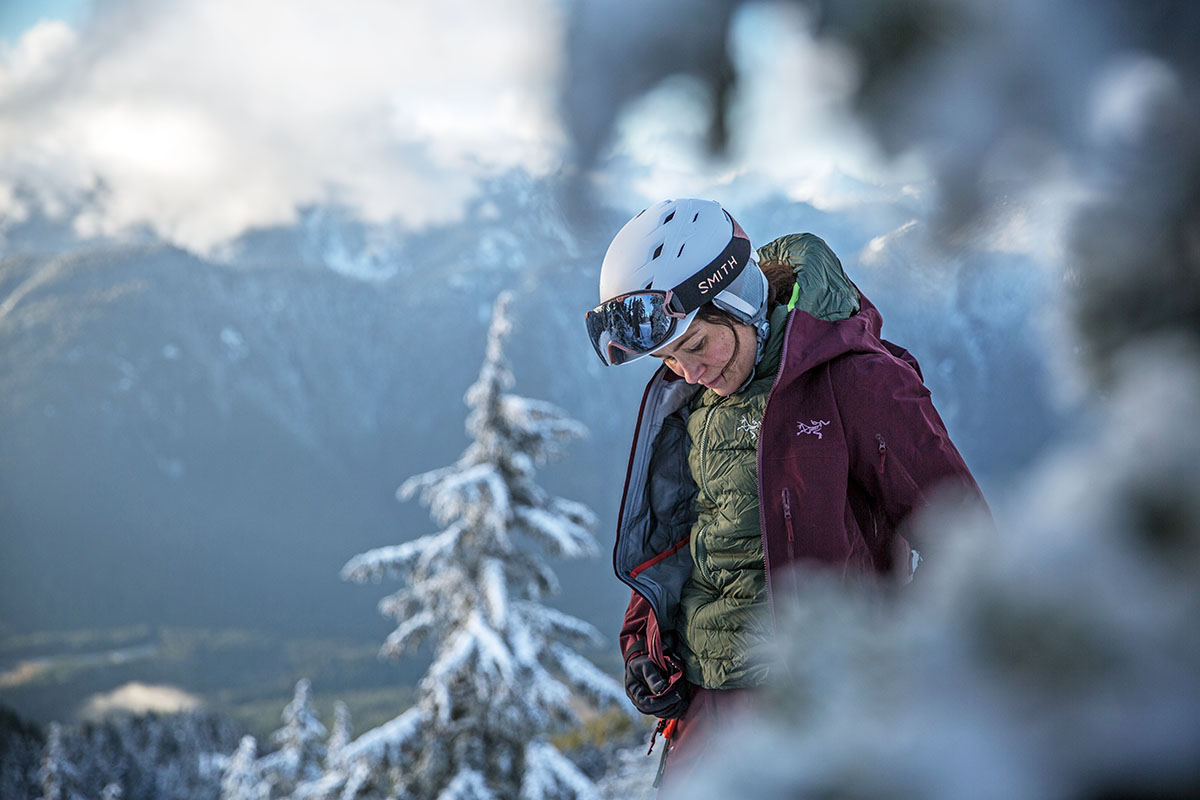
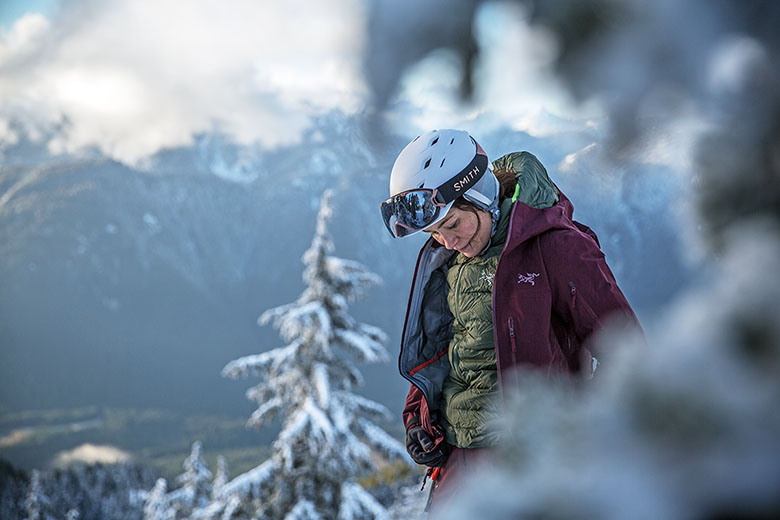
Switchback Travel (Brian McCurdy)
In the typical three-layer clothing system, the midlayer is given the all-important insulating duties. As such, it is the one article of clothing you're most likely to swap out depending on weather conditions. Is it bristling cold and dry? Grab your down jacket. Are temperatures mild, or are you traveling at a breakneck pace? Then a lightweight fleece or synthetic jacket might do the trick. All three types have their proper applications, and below we break down the top midlayers of the 2025 season. For more background information, see our comparison table and buying advice below the picks, along with details about our testing process.
Editor's note: We updated this guide on April 23, 2025 to add the Arc'teryx Proton SL (formerly the Proton Lightweight) and Allium Insulated jackets, as well as Mountain Equipment's Switch Pro Hooded Jacket to the list after recent testing. We also swept the guide and ensured all information was up to date at the time of publishing.
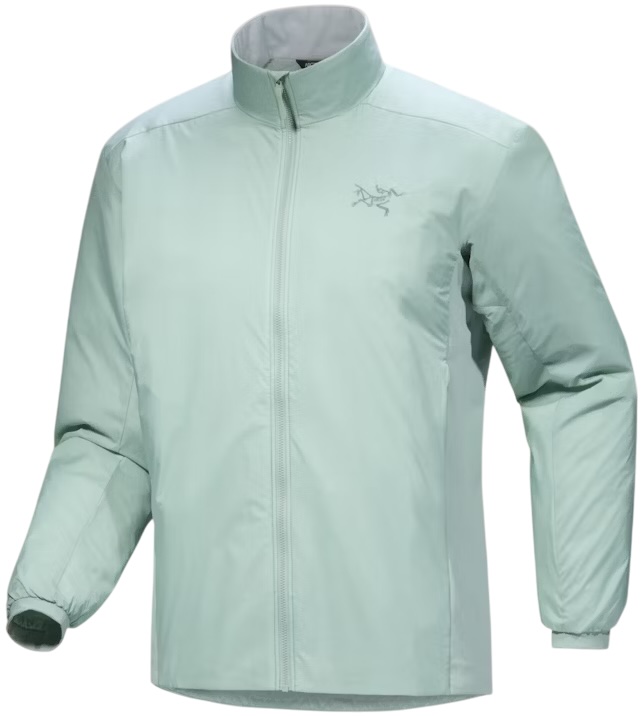 Insulation: Synthetic
Insulation: Synthetic
Weight: 11.8 oz.
What we like: Great mix of mobility, warmth, and comfort.
What we don’t: Not as breathable as other synthetic and fleece options.
Arc’teryx has built its reputation on legendary shells and insulated jackets, and one of its biggest sellers is the Atom Jacket (previously called the Atom LT). Simply put, this is a top-notch midlayer that nails the essentials. You get an excellent balance of breathability and warmth, great mobility, and a just-right cut (updated in the most recent version) that fits most folks really well. The 60-gram Coreloft Compact fill is time-tested and will keep you warm even when wet, and stretchy fleece side panels boost ventilation and freedom of movement. And unlike many midlayers here, the Atom also works great as a standalone jacket with a decently tough and weather-resistant shell. It's also available as a hoody for just $20 more.
With its synthetic insulation, supple face fabric, and stretchy side panels, the Atom offers significantly more breathability than down or down-mimicking designs like Arc'teryx's own Cerium and Patagonia's Micro Puff below. That said, if you run warm or participate in particularly high-output activities, fleece jackets like the Patagonia R1 Air and Norrøna Falketind Alpha120 below will be more adept at dumping heat. It's worth noting that Arc'teryx also makes the Atom in an even lighter (9.9 oz.) SL Hoody, as well as a warmer heavyweight design. Overall, the regular Atom here is impressively well rounded, with winter-ready warmth and a design that effectively toes the line between casual and performance use. Whether you're cruising laps at the ski resort, commuting in the city, or backpacking in the shoulder seasons, it gets the job done.
Read more: Arc'teryx Atom review (men's hooded version)
See the Men's Arc'teryx Atom Jacket See the Women's Arc'teryx Atom Jacket
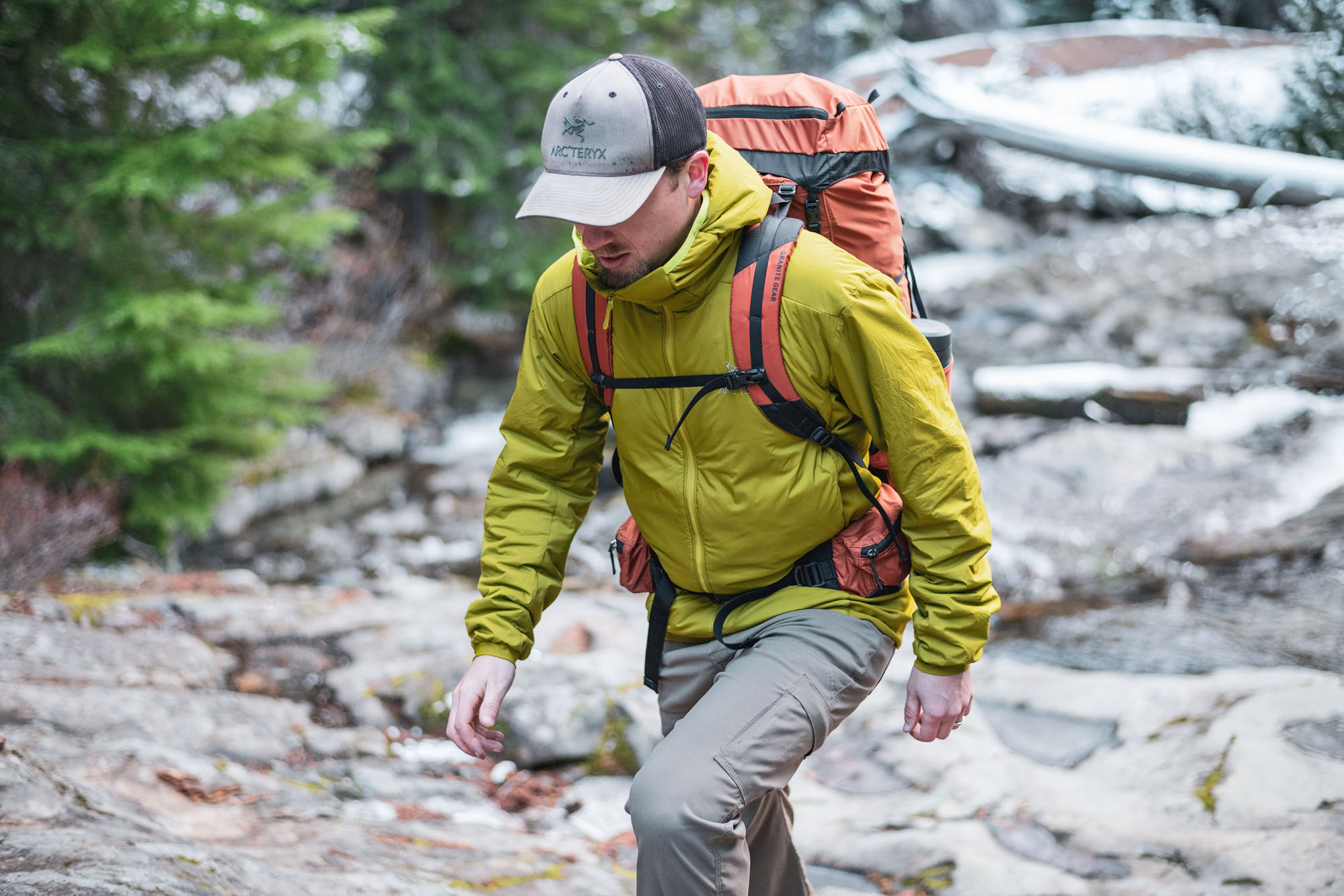
 Insulation: Fleece
Insulation: Fleece
Weight: 14.4 oz.
What we like: Inexpensive and comfortable.
What we don’t: Limited warmth and questionable durability.
Sure, you can spend $300 or more on a midlayer and get some of the fluffiest down or techiest synthetic insulation on the market, but that doesn't mean you have to. For days at the resort that aren't super cold, you can often get away with a simple fleece like the tried-and-true Columbia Steens Mountain 2.0 (and women's Benton Springs). Soft, inexpensive, and offered in a ton of sizes and colors, this is a very popular budget option. For just $46, you get a no-frills midlayer with a surprisingly comfortable fit.
What are the shortcomings of going so cheap? The materials on the Steens Mountain 2.0 are very basic, and the jacket has few features to speak of. It also won't last as long as the higher-end fleece options on this list—the material is soft and prone to pilling. Finally, the Steens is decently cozy but falls somewhere in the light to midweight category, meaning that the warmth it provides will be limited. For long and cold days at the resort, you'll certainly want to go with a pricier down or synthetic midlayer. But overall, for mild conditions and spring skiing with a baselayer underneath, the Steens Mountain 2.0 checks the boxes without breaking the bank.
See the Men's Steens Mountain 2.0 See the Women's Benton Springs
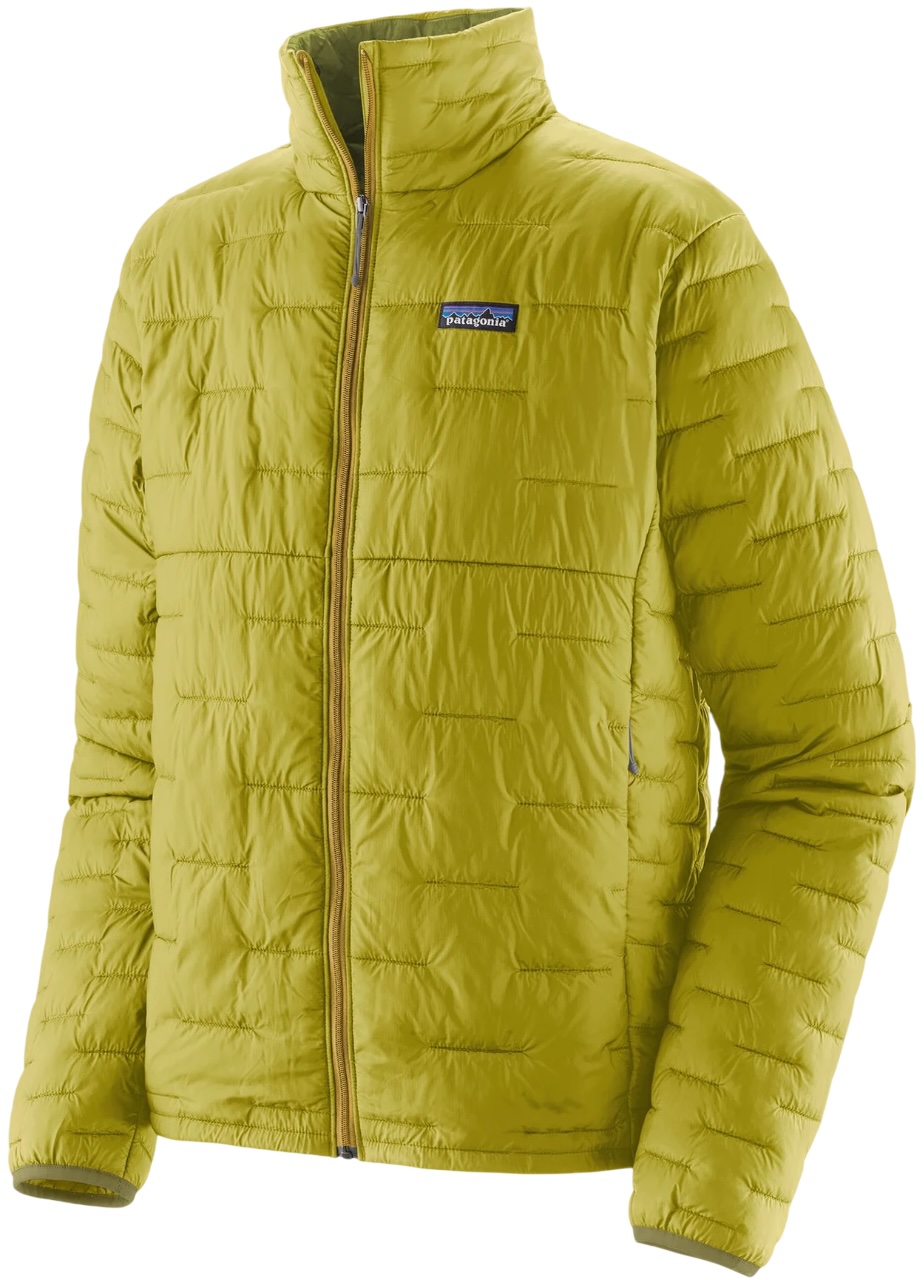 Insulation: Synthetic
Insulation: Synthetic
Weight: 10.4 oz.
What we like: The light weight and packability of down in a synthetic jacket that insulates even when wet.
What we don’t: Not as comfortable or breathable as the Atom above.
The Arc'teryx Atom above is our top choice for resort skiing and daily wear, but with bulky, sweatshirt-like fabric that doesn't pack down super well, it's far from a minimalist midlayer. Enter the Micro Puff, which combines an extremely thin (10D) face fabric with Patagonia's light and lofty PlumaFill insulation for a super cozy jacket that stuffs into its left pocket and clocks in at 10.4 ounces. PlumaFill mimics down plumage, providing similar warmth, low weight, and packability to a down jacket in a design that still insulates when wet. The result is a high-performance midlayer ideal for weight-conscious pursuits like backcountry skiing and climbing.
Despite its technical prowess, it's important to note that the Micro Puff is not for everyone. Unlike the Atom above, it does not excel in the breathability department, nor do you get the stretchy and supple feel that makes many synthetic midlayers so easy to wear. If weight is not an issue—or if you plan to keep your jacket on all day—we'd stick with a midlayer more intended for active insulation, like the Atom or R1 Air below. But as the lightest synthetic jacket on our list, the Micro Puff is hard to beat when weight and space are top priorities.
Read more: Patagonia Micro Puff review (women's hooded version)
See the Men's Patagonia Micro Puff See the Women's Patagonia Micro Puff
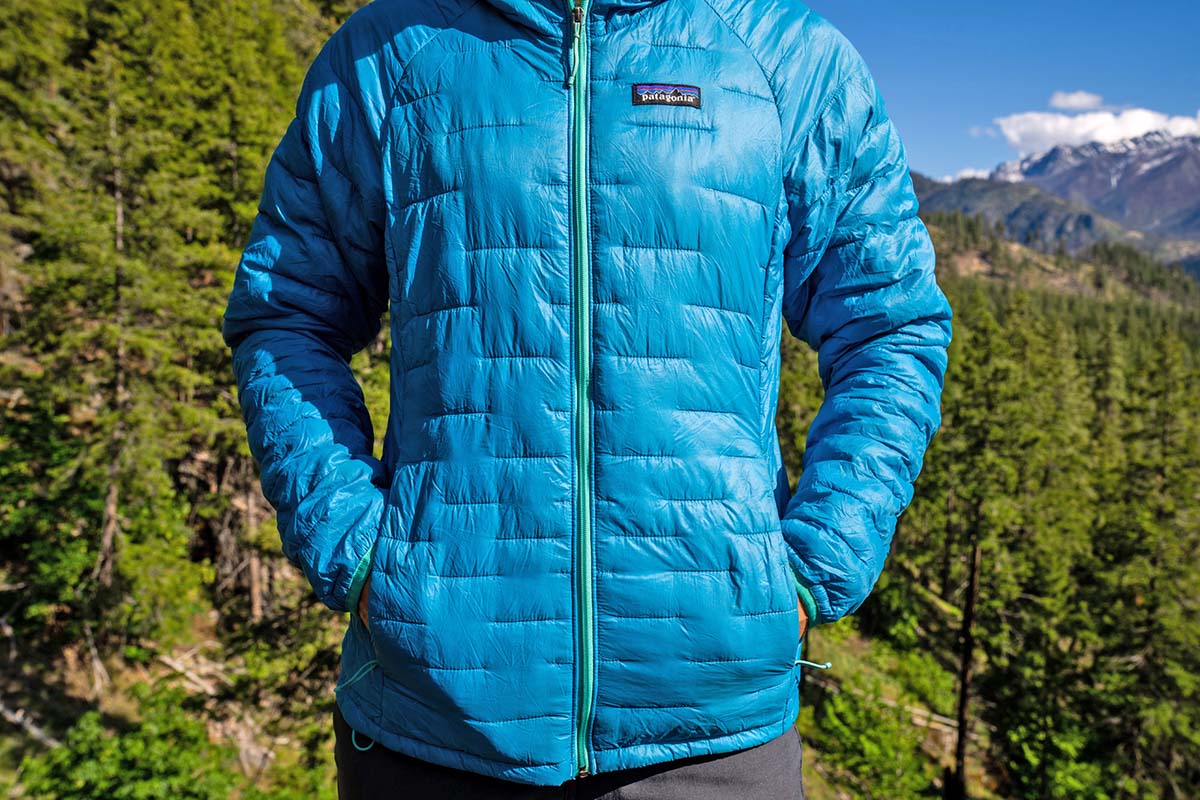
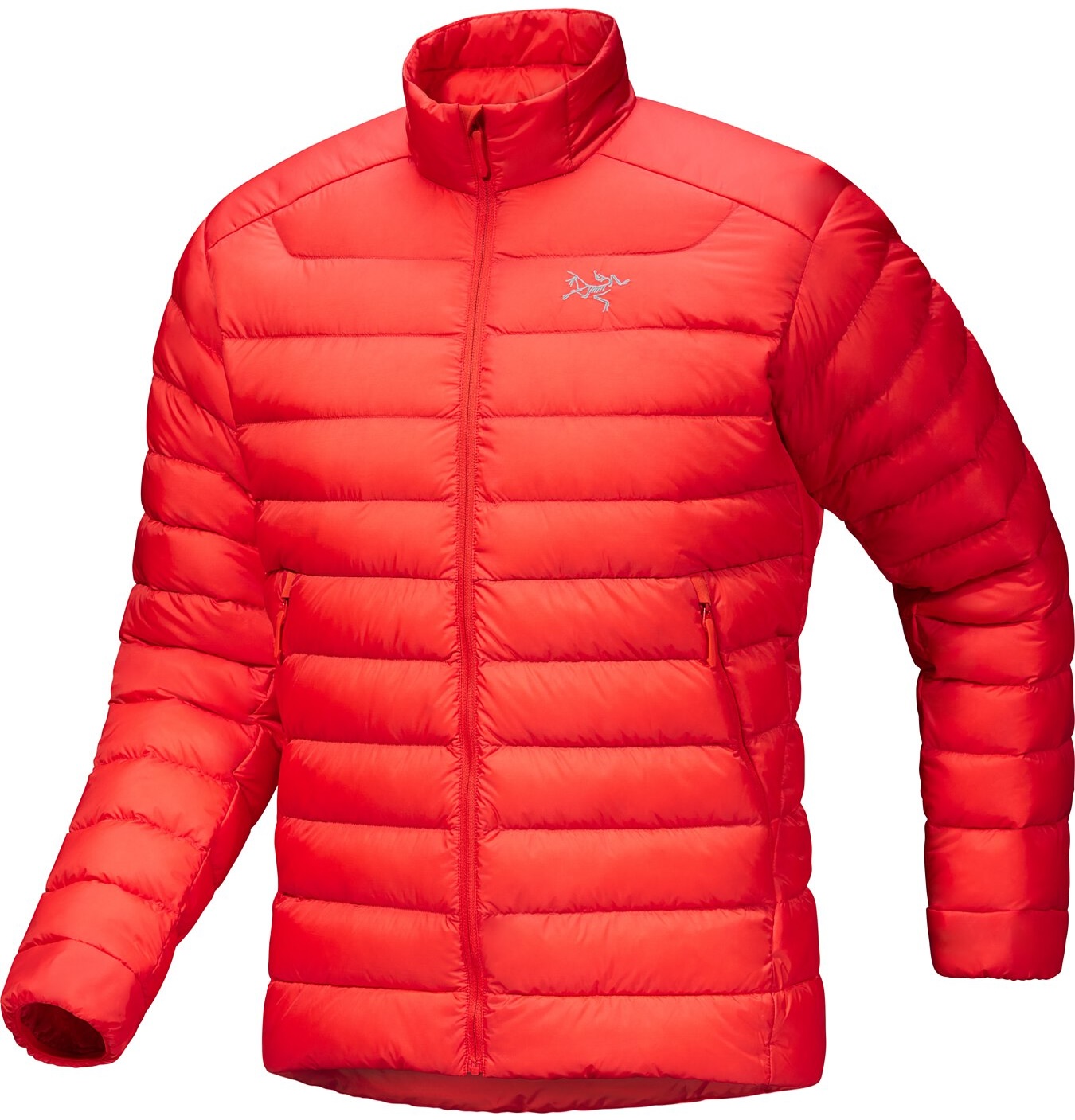 Insulation: Down and synthetic
Insulation: Down and synthetic
Weight: 10.6 oz.
What we like: Super warm for the weight and added wet-weather protection in a sustainably built package.
What we don’t: Pricey and won’t breathe as well as a fully synthetic jacket.
In most cases, we recommend synthetic-insulated or fleece jackets for midlayer use: They're relatively breathable and provide warmth even when wet. But in dry conditions or for low-output activities like casual resort skiing, a down midlayer can be a really nice choice. Not only is down extremely lofty and cozy, but it's also very lightweight and packable compared to the alternatives. Among the options, Arc'teryx's Cerium Jacket (formerly the Cerium LT) is our top pick, thanks to its minimalist 10.6-ounce build, premium 850-fill down, and trim, performance-oriented fit. We're also big fans of the hybrid design, which features synthetic insulation in areas most prone to moisture (the collar, shoulders, underarms, and cuffs) for a bit of wet-weather assurance. Finally, Arc'teryx gave the Cerium a sizable sustainability boost with the most recent update, including the use of recycled and bluesign-approved fabrics, bio-based materials, RDS-certified down, and a dope-dyed shell, which only add to the all-around appeal.
The Cerium Jacket is undeniably expensive at $380 for the non-hooded version (the past-generation Cerium LT was a little cheaper at $349)—especially considering that for over $100 less, the synthetic-insulated Atom above is almost as warm, much more breathable and durable, and more protective in inclement weather. But for weight-conscious missions in dry areas (think backpacking in the desert) or if you just like the high-end feel of down, it doesn't get much better than the Cerium. And it's hard to beat Arc'teryx's premium fit, which is noticeably less boxy than alternatives like the Down Sweater below and looks great for both backcountry and around-town use.
Read more: Arc'teryx Cerium review (men's hooded version)
See the Men's Arc'teryx Cerium Jacket See the Women's Arc'teryx Cerium Jacket
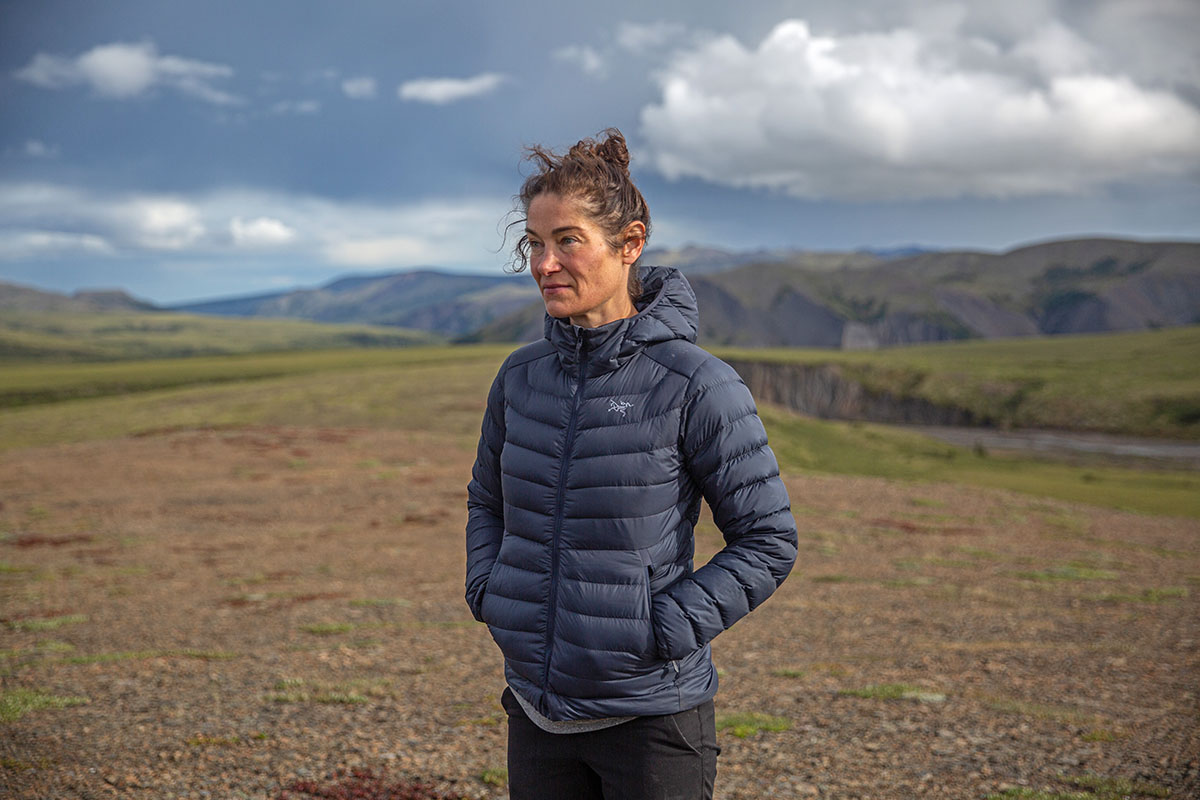
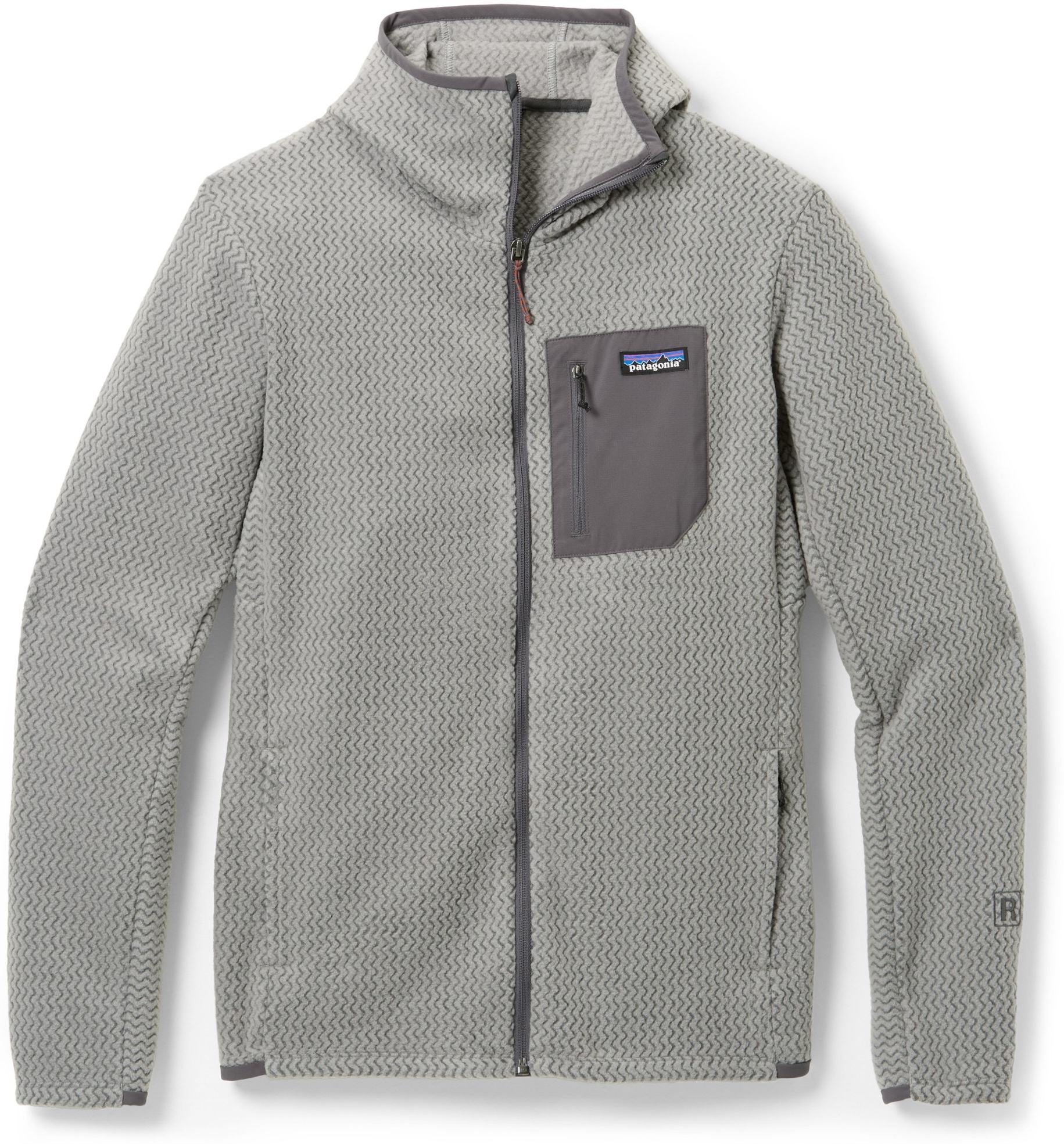 Insulation: Fleece
Insulation: Fleece
Weight: 12.9 oz.
What we like: The ultimate athletic fleece.
What we don’t: Limited water resistance (no DWR treatment).
Lightweight performance fleeces are a growing trend, and we particularly like what Patagonia has done with their R1 Air. With an emphasis on breathable warmth in a lightweight build, this is an intriguing midlayer piece for high-output activities like backcountry skiing or climbing. Fleeces already tend to be a rather air-permeable breed (notably more so than down insulation), but the R1 Air ups the ante with hollow fiber yarns and a zig-zag patterning that work together to trap warmth and dump heat. The end result is a highly technical fleece that offers ample insulation for mild conditions but truly shines when you venture off trail.
Along with their breathability, we also like fleeces as midlayers in terms of value. Patagonia apparel isn't cheap, but at $179, the R1 Air is a nice step down in price from the synthetic and down offerings in our lineup. The major compromise is that this jacket (and fleece in general) does not block wind or guard against light precipitation, which limits its utility as an outer layer. To complicate matters, the R1 Air Full-Zip comes with a hood, which isn't always ideal for midlayer use, but you can also step down to the non-hooded Zip-Neck or Crewneck Pullover versions for less bulk under a shell. Finally, the sleeves were a little short for one of our testers, barely reaching the base of her hands, but this won't be an issue for everyone. Overall, for big efforts on the skin track or the sharp end, breathability should be high on your priority list—and it’s here that the R1 Air truly delivers.
Read more: Patagonia R1 Air Full-Zip review (women's hooded version)
See the Men's Patagonia R1 Air Full-Zip See the Women's Patagonia R1 Air Full-Zip
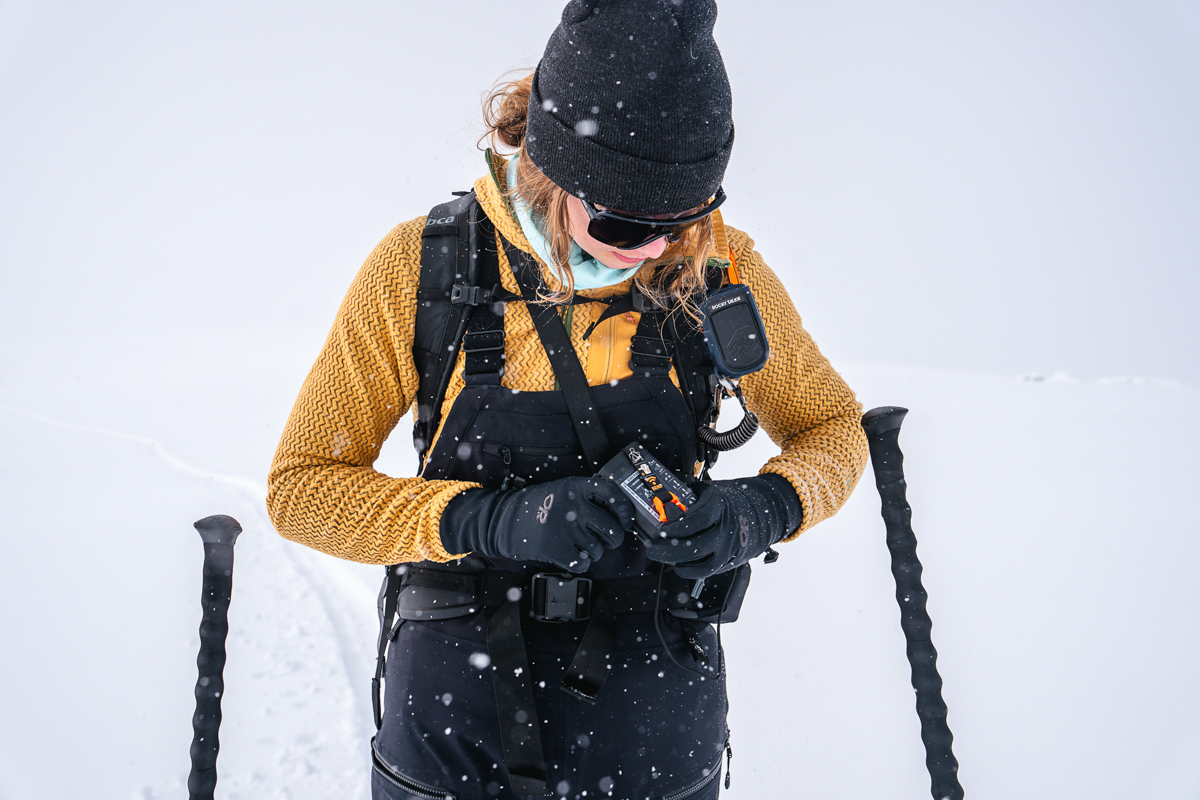
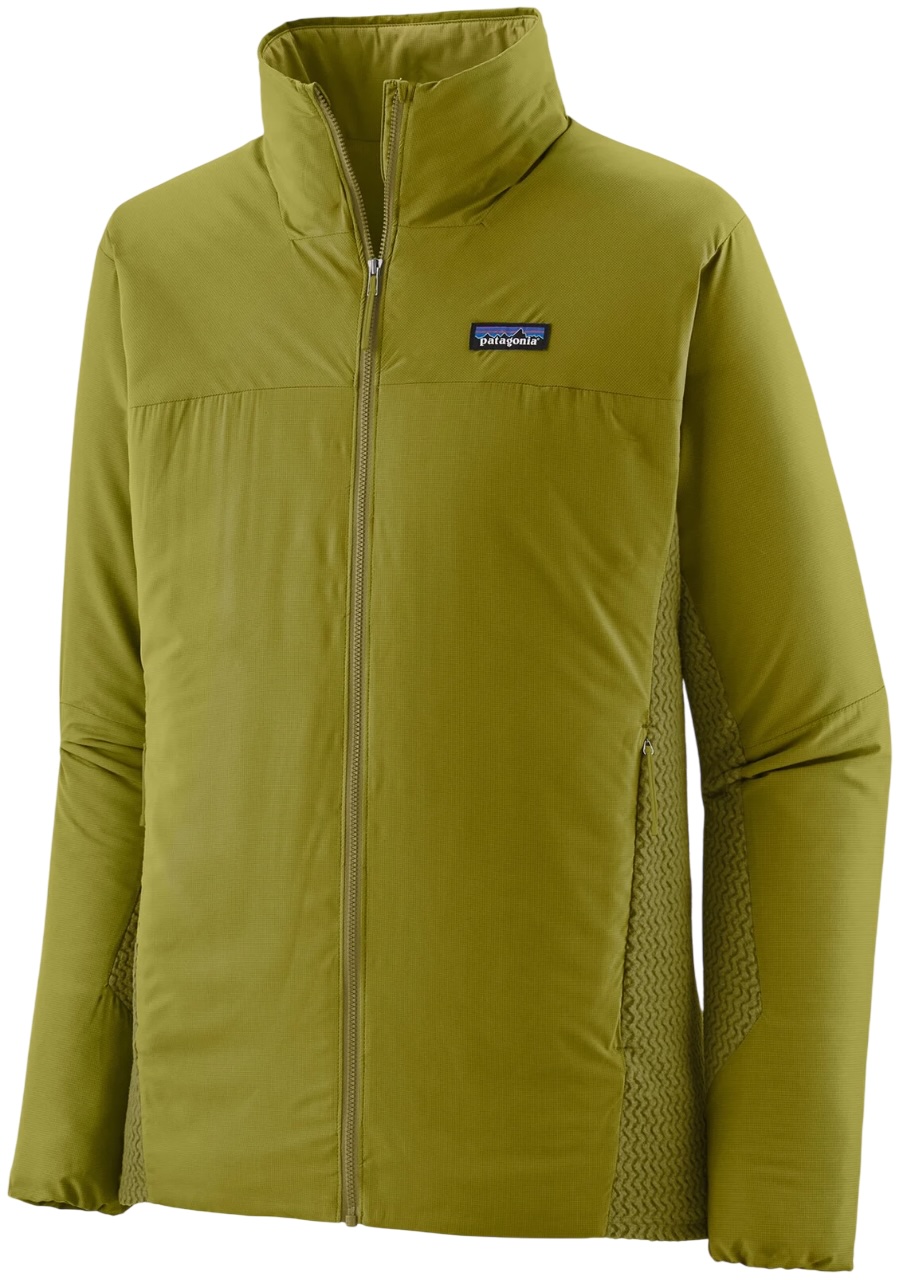 Insulation: Synthetic and fleece
Insulation: Synthetic and fleece
Weight: 10.5 oz.
What we like: A high-performance combination of synthetic insulation and fleece.
What we don’t: Not as warm as most jackets here.
It's no secret at this point that synthetic fill and fleece are our two favorite midlayer insulators—they're breathable, sleek, and (unlike down) still provide warmth when damp. We're usually forced to choose between one or the other, but Patagonia's unique Nano-Air Light Hybrid offers the best of both worlds with an intelligent combination of lightweight synthetic fill (40g FullRange) at the front and cozy fleece (similar to that of the R1 Air above) at the back, sides, and underarms. Protecting the synthetic fill is a 100%-recycled, soft yet durable, and impressively air-permeable face fabric borrowed from Patagonia's beloved Nano-Air Jacket. The net result is a high-performance midlayer (or great standalone piece), ideal for shoulder-season climbing, backpacking, ski touring, and more.
The Nano-Air Light Hybrid isn't as insulative as most jackets here—the 40-gram FullRange is thinner than the more standard 60-gram fill, and the panels of fleece don't do much to keep out the wind—but this is a good example of less is more. This design is ideal for when jackets like the Atom or Cerium above are just too much (think mild shoulder-season conditions or high-output activities), and we're big fans of the breathable back when adventuring with a backpack. Keep in mind that the Nano-Air Light Hybrid is designed to fit particularly snugly, although the sizing is ideal for midlayer use. For a bit more jacket, check out the classic Nano-Air Hoody ($329), which features 60-gram FullRange insulation throughout.
See the Men's Patagonia Nano-Air Light Hybrid See the Women's Nano-Air Light Hybrid
I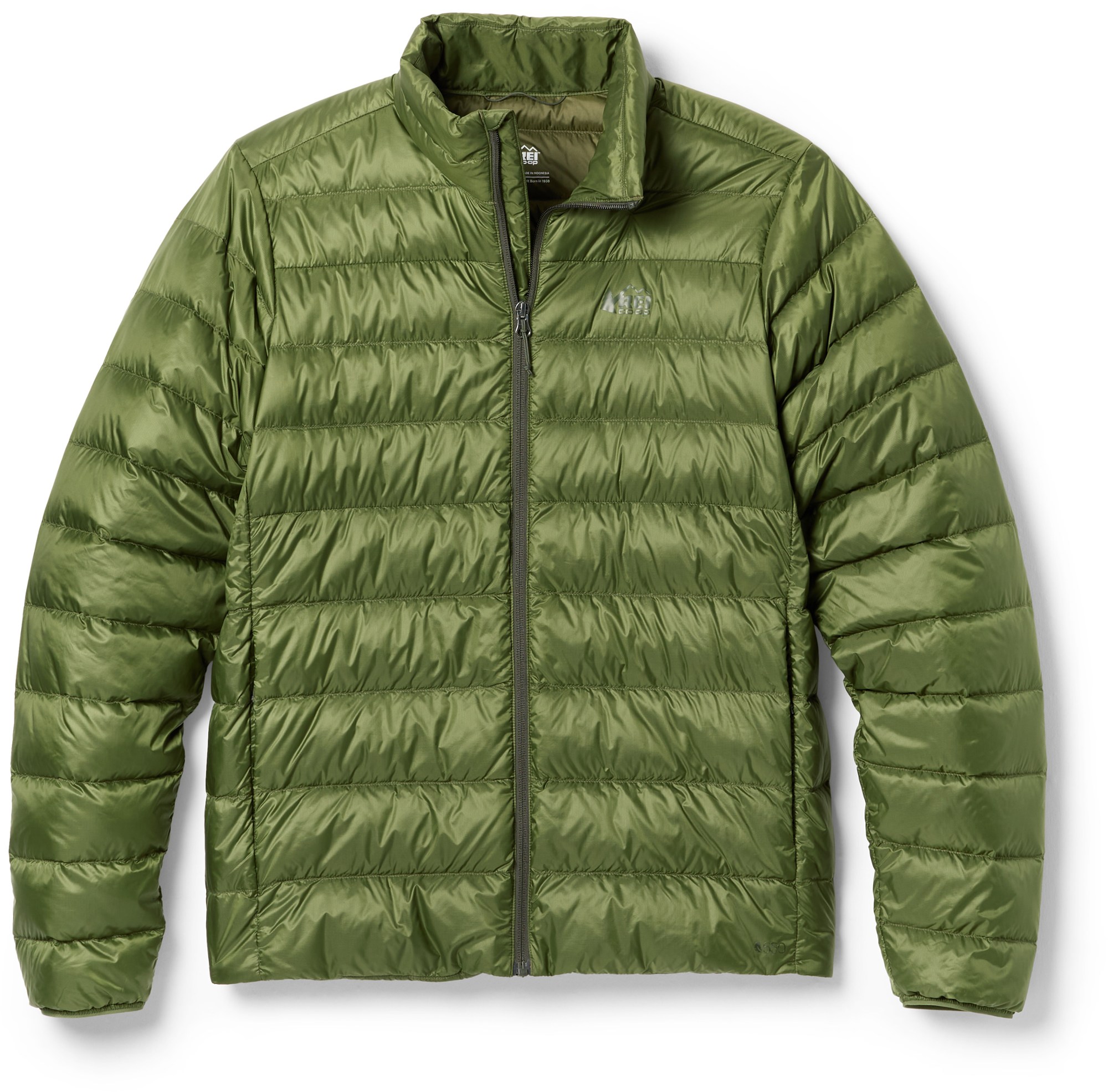 nsulation: Down
nsulation: Down
Weight: 10.9 oz.
What we like: Great value for a down jacket.
What we don’t: Less of a performance option.
For those looking for a down jacket on a budget, we love what REI Co-op has to offer. Their 650 Down Jacket is reasonably light at 10.9 ounces, provides solid warmth with over 4 ounces of 650-fill-power down, and features a windproof and water-resistant shell. REI also honed the design with the latest version by adding a hem adjustment, a more durable ripstop nylon shell, and traditional horizontal baffles (the previous version had box baffles). The price did go up by $29, but the jacket still easily undercuts most competitors by $100 or more. For daily use, travel, light adventuring, and as a midlayer for resort skiing, you simply won’t find a better deal.
Budget-oriented products almost always come with compromises, and REI's down jacket does fall short for serious performance use. The 650-fill down isn't quite as warm or compressible as the 800-fill of the Cerium above or Down Sweater below, and the most recent version no longer packs into its hand pocket (nor does it include a stuff sack). What's more, the fit is fairly roomy, which is great for standalone use but less ideal for sliding under a trim-fitting hardshell. But circling back to value, the 650 Down Jacket's combination of warmth, build quality, and price are simply unmatched, making it an easy "yes" for those on a budget. REI leads the outdoor industry in inclusive sizing, too: The men's jacket comes in 10 sizes, including four "Tall" sizes, while the women's version is available in eight sizes from XS to 3X.
Read more: REI Co-op 650 Down review (men's version)
See the Men's REI 650 Down Jacket See the Women's REI 650 Down Jacket
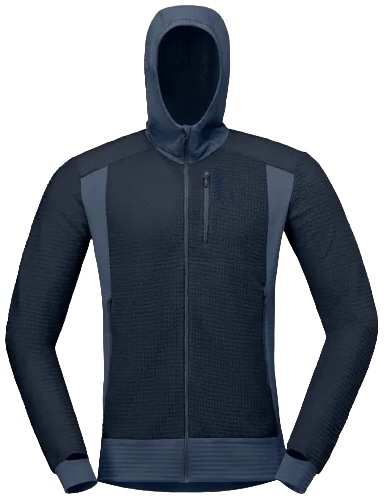 Insulation: Fleece
Insulation: Fleece
Weight: 9.9 oz.
What we like: Lighter and more packable than most fleeces but still quite warm.
What we don’t: Pricey and the thin materials lack durability.
Norway-based Norrøna competes with leading mountain brands like Arc'teryx and Rab, and we've been extremely impressed by everything from their technical hardshells to their down jackets and midlayers. Their Falketind Alpha120 Zip Hood fleece is no exception, combining premium materials and a performance-ready feature set in a thoughtfully built package. Touted as the brand's most breathable and quick-drying midlayer, the Alpha120 features a mix of Polartec's uber-light Alpha (120g) and Power Grid (139g) fleece fabrics—the former concentrated around the core for warmth and the latter offering stretch along the underarms, sides, and hood. Tack on integrated hand gaiters, harness- and hipbelt-friendly pockets, and a trim, body-hugging fit, and you have a high-quality and cozy technical piece for heart-pumping winter adventures.
The Falketind Alpha120 is decidedly thin—heck, you can even see through the Alpha insulation when you hold it up to the light—but we’ve found that it provides an impressive amount of warmth, even at camp or during trailside breaks. What’s more, it packs up smaller than most fleeces, and at just 9.9 ounces, it's a lot lighter than offerings like the Patagonia R1 Air above (12.9 oz.) and Arc’teryx Kyanite below (13.8 oz.). It’s true that the Power Grid fabric is more prone to pilling and staining than more robust fleece varieties, and the Alpha fabric is notably lacking in wind resistance. But as a lightweight insulator that’s trimmer-fitting and more breathable than down, the Falketind Alpha120 deserves a look.
See the Men's Norrøna Falketind Alpha 120 See the Women's Norrøna Falketind Alpha120
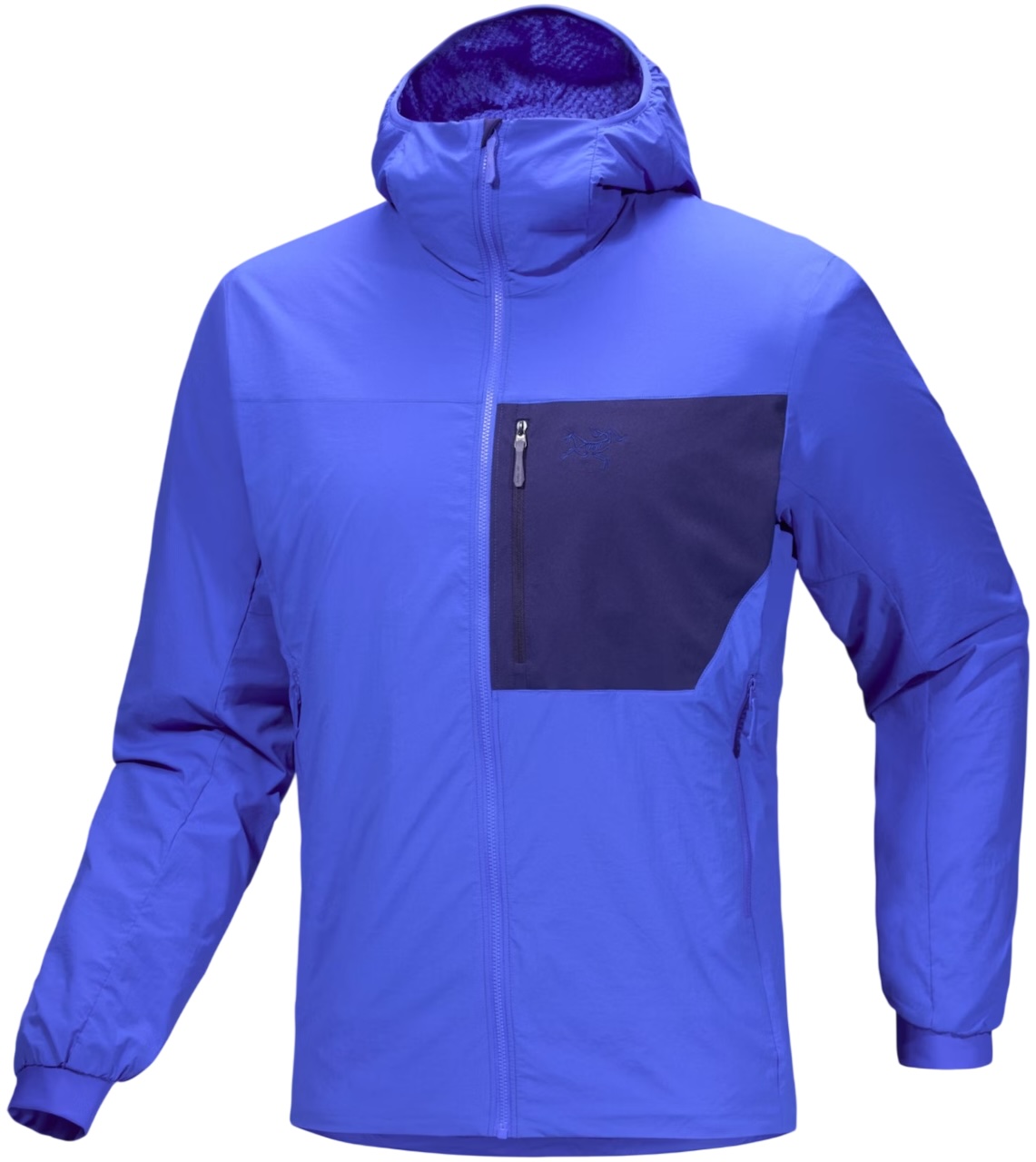 Insulation: Synthetic
Insulation: Synthetic
Weight: 13.1 oz.
What we like: The breathability of fleece but with a tough and weather-resistant shell.
What we don’t: Expensive and not particularly durable.
The midlayer category is a big one, encompassing everything from down and synthetic insulators to fleece jackets, hybrids, vests, and more. And then there's the Arc'teryx Proton SL (previously the Proton Lightweight), which defies categories with its unique and high-performance design. On the outside, the Proton SL features a stretchy shell fabric (now constructed with recycled materials) that's reminiscent of Patagonia's Nano-Air material, but a bit thinner. The inside features an exposed Octa Loft insulation that looks a bit like fleece but with more heat-trapping and moisture-wicking fibers than most varieties. The result is a highly breathable yet weather-resistant jacket that's ideal for heart-pumping activities like ski touring and winter running.
At $280, the Proton SL is undeniably expensive, and we do have durability concerns with the thin 20-denier face fabric and exposed Octa Loft insulation. But by foregoing a liner, Arc'teryx boosts breathability by a noticeable margin. You'll pay a lot more than you would for a fleece jacket like the Patagonia R1 Air above, but the Proton SL performs similarly during active use and tacks on the added protection (and sleek look) of a shell. We know ski guides who wear this jacket daily during the winter months, which is true praise for a midlayer. It’s also worth pointing out that a few other brands have layers with similar constructions, including the Norrona More Octa Zip and Mountain Equipment Pro Hooded below (the former being a cheaper option at $249). Lastly, those looking for a traditional synthetic midlayer should take a look at the standard Proton Hoody ($350), which features 80 grams of CoreLoft insulation and the same breathable Fortis Air nylon shell.
See the Men's Arc'teryx Proton SL Hoody See the Women's Proton SL Hoody
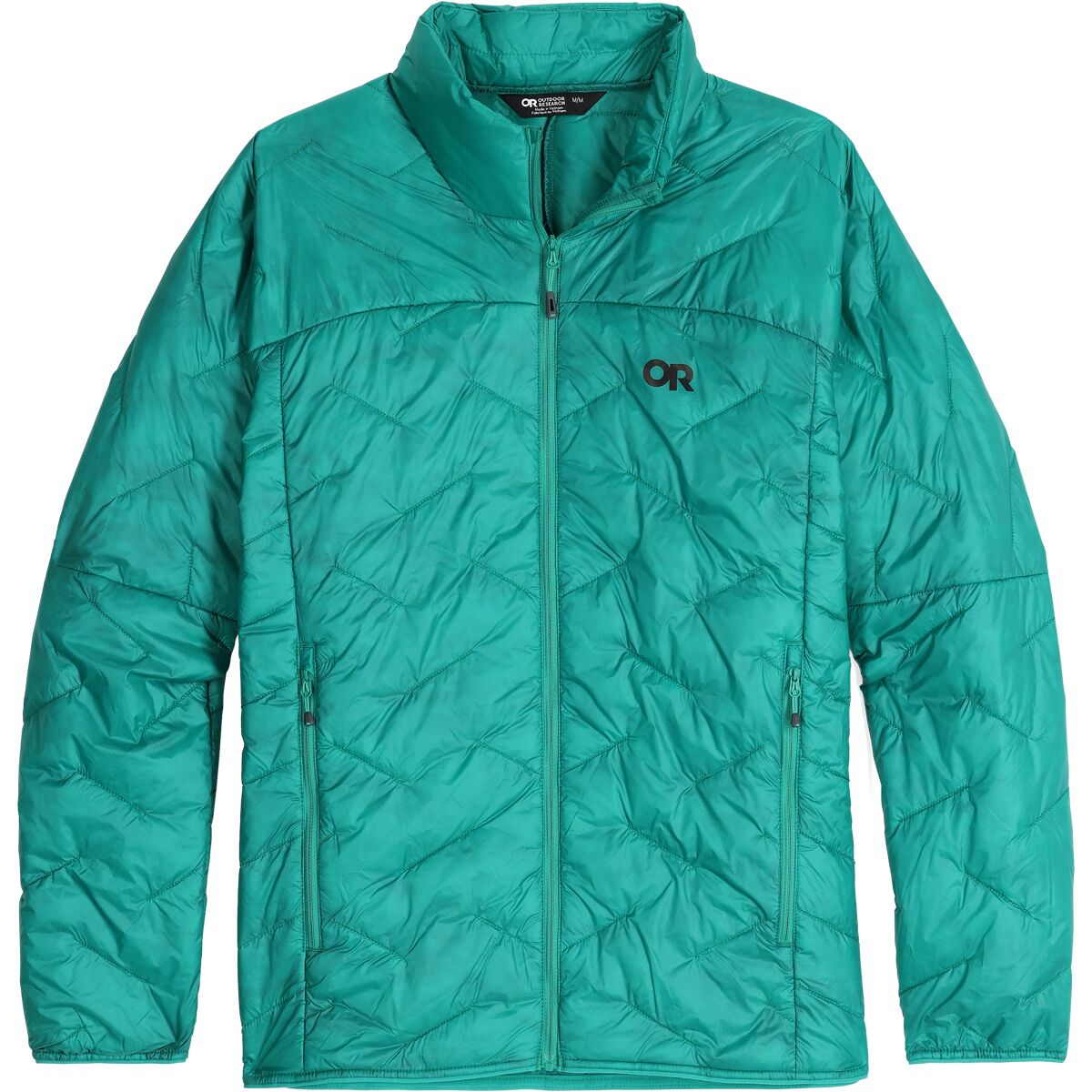 Insulation: Synthetic
Insulation: Synthetic
Weight: 10.9 oz.
What we like: Affordable with impressive warmth for the weight.
What we don’t: Not very breathable and shell fabric is fragile.
Outdoor Research has come out with a number of innovative synthetic jackets over the years, and the SuperStrand LT is just that. Like the Micro Puff above, the SuperStrand LT aims to provide maximum warmth for minimal weight and bulk, and it delivers in spades. The jacket combines a super thin (12D) nylon ripstop shell with VerticalX's SuperStrand technology, a down-mimicking synthetic insulation that is impressively lofty, even when wet. And unlike many of the bulkier fleece and active insulation pieces here, it stuffs down into a corner of your pack when not in use (or into its left-hand pocket). Added up, the SuperStrand LT is an intriguing midlayer for weight-conscious backcountry skiers, alpine climbers, and mountain runners alike.
We've learned to count on Seattle-based Outdoor Research for great performance at a low cost, and—true to form—the SuperStrand LT checks in at $80 less than the aforementioned Patagonia Micro Puff. That said, it's not quite as warm or durable as the Micro Puff, and OR consistently falls short of Patagonia in terms of quality of materials and fit and finish. Finally, there are a couple downsides to the SuperStrand's purpose-built design: It doesn't breathe as well as active midlayers like the Nano-Air Light Hybrid or R1 Air above, and the thin shell fabric is fragile and limits the jacket's use as a standalone piece. But as an emergency layer or for added warmth at chilly belays, the OR is a great value, and it's also available in a hooded version for $235.
Read more: OR SuperStrand LT review (women's hooded version)
See the Men's Outdoor Research SuperStrand LT See the Women's Outdoor Research SuperStrand LT
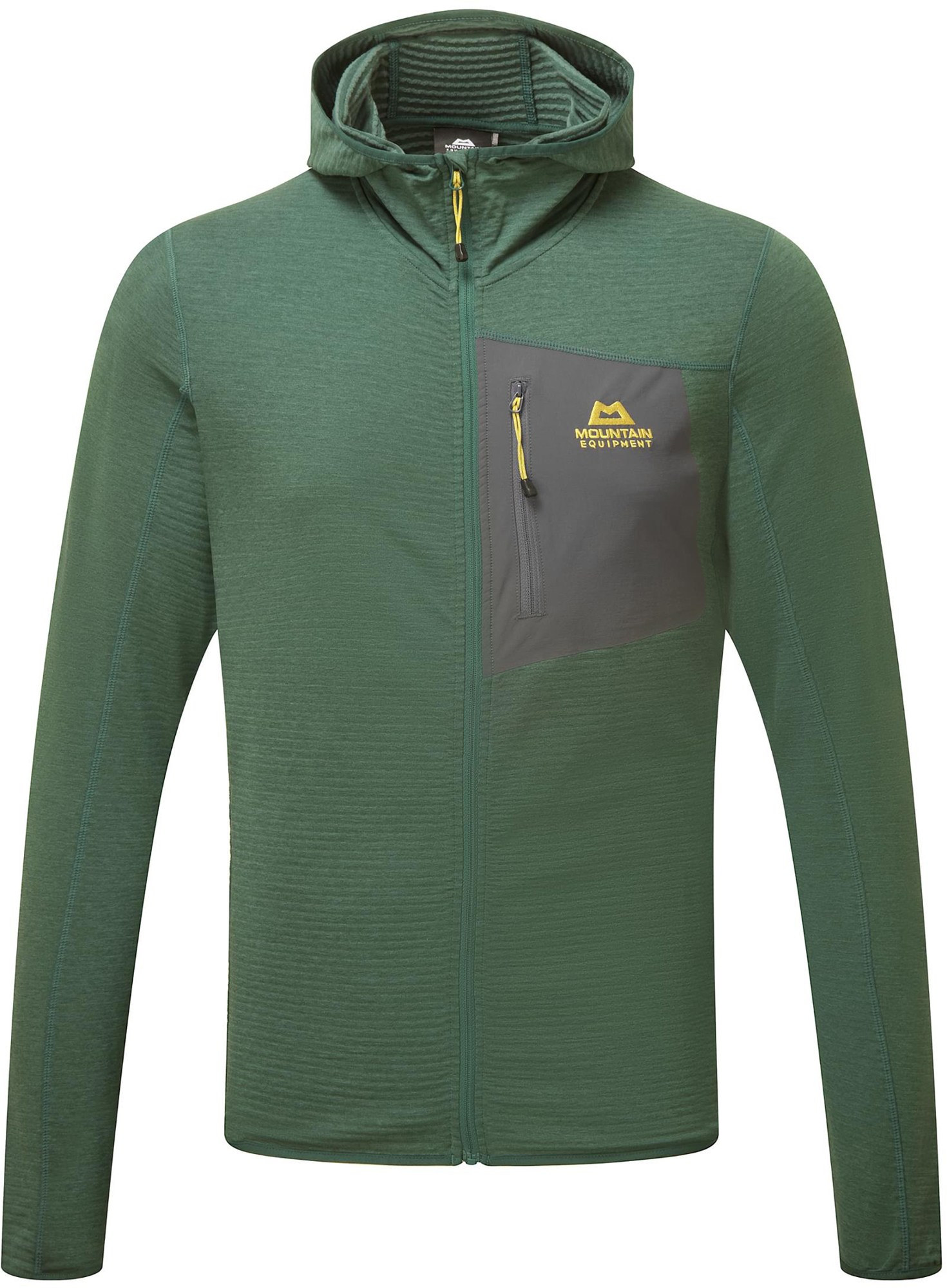 Insulation: Fleece
Insulation: Fleece
Weight: 9.5 oz.
What we like: Effective balance of weight, warmth, and breathability—at a very palatable price point to boot.
What we don’t: Limited weather resistance, no hand pockets, and a couple fit and finish issues.
U.K.-based Mountain Equipment may not have the name recognition of brands like Patagonia or Arc’teryx, but we’ve been thoroughly impressed by their climbing and ski apparel. The Lumiko is one of our ski editor’s go-to midlayers, securing a spot as her “put it on and forget about it” backcountry layer. At just 9.5 ounces, the Lumiko offers an impressive amount of warmth for its weight with a gridded fleece construction that traps heat while remaining breathable during high-output activities (similar to the R1 Air above). The performance fit makes it easy to layer underneath a hardshell or heavyweight insulator, and the form-fitting hood is both low-profile and secure. The cherry on top is the $120 price tag, which undercuts the similarly intentioned R1 Air above by a considerable $60.
That said, like the R1 Air, the Lumiko has its limitations as a standalone layer. While the breathable fabric is quick to dry, the jacket offers little in the way of wind or water resistance. Additionally, the Lumiko omits hand pockets, which helps keep weight down but limits the jacket’s casual appeal (although the chest pocket is large enough to swallow a smartphone). We also have a couple gripes about the interior: It’s not as soft as the R1 Air above or Arc’teryx Kyanite below and tends to cling to baselayers, which can make for an awkward fit. Finally, the main zipper is fairly stiff and can cause bunching around the midsection, although this is mostly an aesthetic issue (ME also offers a non-hooded, half-zip version for $100). But for high-output efforts like backcountry skiing and alpine climbing, the Lumiko has stood the test of time and remains a staple in our winter wardrobe.
See the Men's ME Lumiko Hooded Jacket See the Women's ME Lumiko Hooded Jacket
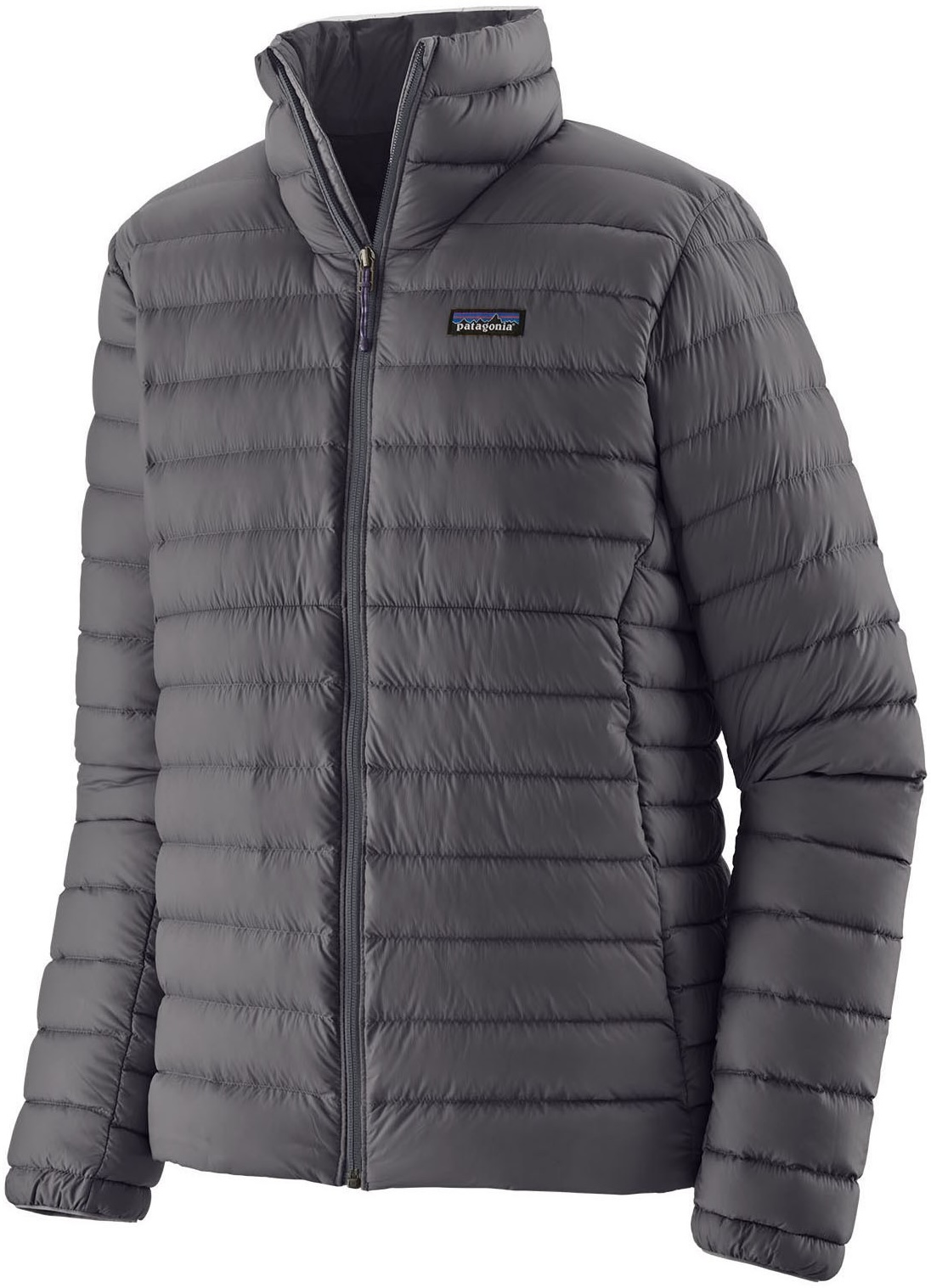 Insulation: Down
Insulation: Down
Weight: 13.0 oz.
What we like: Versatile, well built, and cozy warmth.
What we don’t: Not a weight and packability leader.
Few jackets have stood the test of time like the Patagonia Down Sweater. Iconic both for its classic styling and lofty warmth, the Down Sweater is a versatile down jacket that’s equally at home in town as it is on the slopes. With the most recent version, you get 5 ounces of premium 800-fill down (up from the previous model’s 3.4 oz.), a durable shell made from recycled fishing nets, and drop-in internal pockets for additional storage. Given that Patagonia’s high-end build should last many seasons of skiing and casual use, the Down Sweater is decently priced at $279 (a significant savings compared to the $380 Cerium Jacket above).
Unlike the Cerium Jacket, which uses synthetic insulation in high-exposure areas, the Down Sweater features 100% down. As a result, you'll need to be especially careful to stay dry in wet conditions and should plan to pair it with a waterproof hardshell or ski jacket. The rest of the jacket follows suit with less of a performance focus overall—the fit is roomy enough to accommodate casual layers underneath (like a flannel), weight is a bit hefty at 13 ounces (compared to the Cerium's 10.6 oz.), and the 800-fill down is slightly less premium than the Arc'teryx's 850-fill (although you do get considerably more of it). But for a versatile midlayer for a wide variety of people and uses, the Down Sweater is well worth a look. It's also available in a hooded version, but that upgrade will up the price by a whopping $50.
Read more: Patagonia Down Sweater review (men's hooded version)
See the Men's Patagonia Down Sweater See the Women's Patagonia Down Sweater
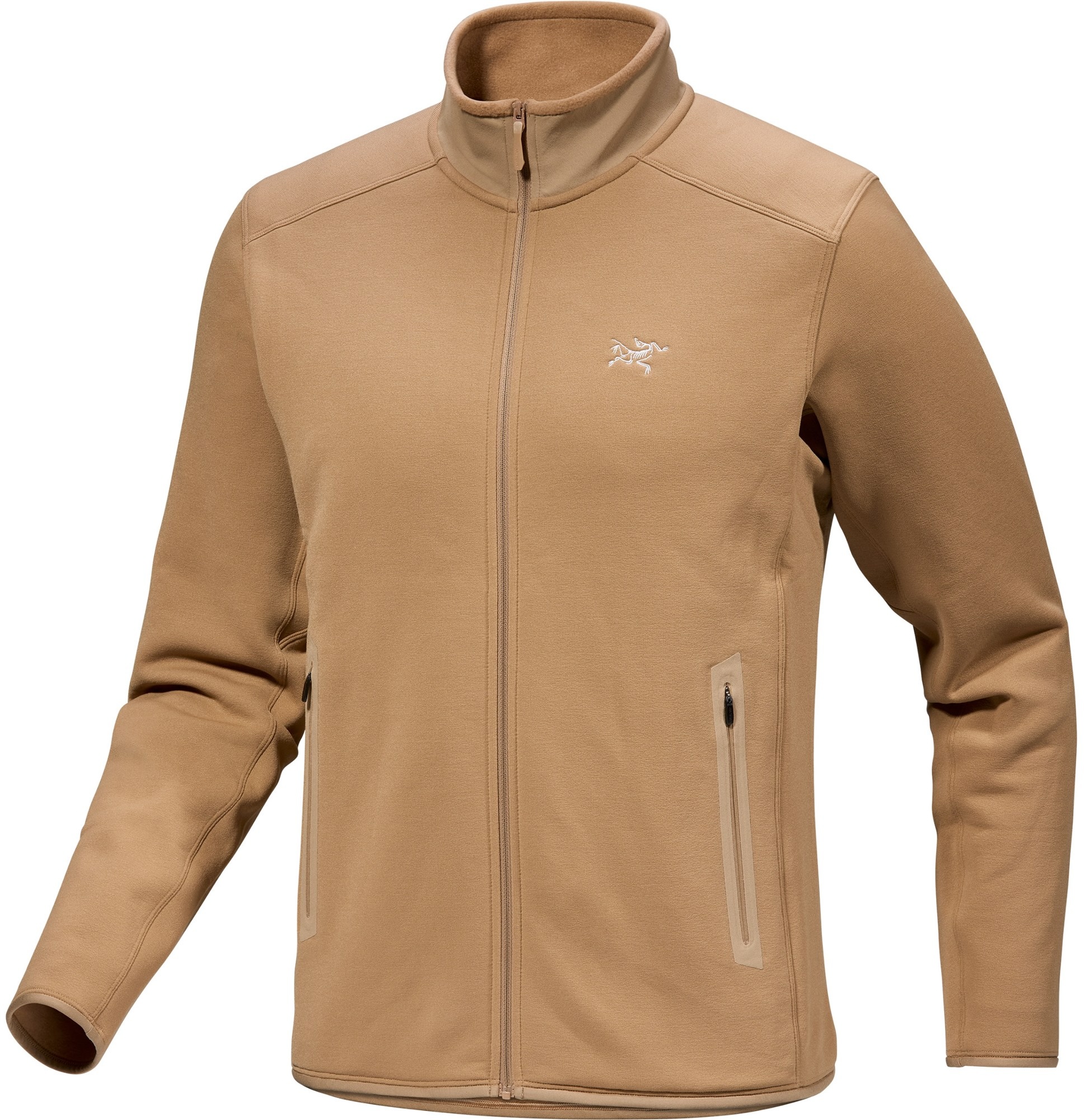 Insulation: Fleece
Insulation: Fleece
Weight: 13.9 oz.
What we like: Premium fleece fabric offers great comfort, range of motion, and breathability.
What we don’t: A bit heavy and not as warm as a synthetic jacket.
For a serious performance fleece, we again turn to Arc’teryx and the versatile Kyanite Jacket (previously called the Kyanite AR). This jacket pretty much does it all: The midweight Polartec build works well as an active midlayer for backcountry skiing but is thick enough to wear as a standalone piece on the uphill or for shoulder-season climbing. We also appreciate the stretch of the fabric, which offers solid range of motion, and the trim fit means you won’t have much in the way of bunching under a shell. Finally, the interior is super soft, and the entire design boasts the excellent build quality and long-term durability we've come to expect from Arc'teryx.
What are the shortcomings of the Kyanite? In general, fleece jackets are less warm and packable than comparable synthetic options, although you do save a bit in terms of cost. And while the Kyanite features a durable nylon shell, it won’t hold up to much more than a light breeze or sprinkle. Finally, at 13.9 ounces, it’s one of the heavier midlayers on our list despite only providing moderate insulation. But for a wildly comfortable and premium fleece that’s one of our go-to jackets for both skiing and casual use, we’re big fans of the Kyanite. Arc’teryx also makes a hooded version for a boost in warmth.
Read more: Arc'teryx Kyanite review (women's hooded version)
See the Men's Arc'teryx Kyanite Jacket See the Women's Arc'teryx Kyanite Jacket
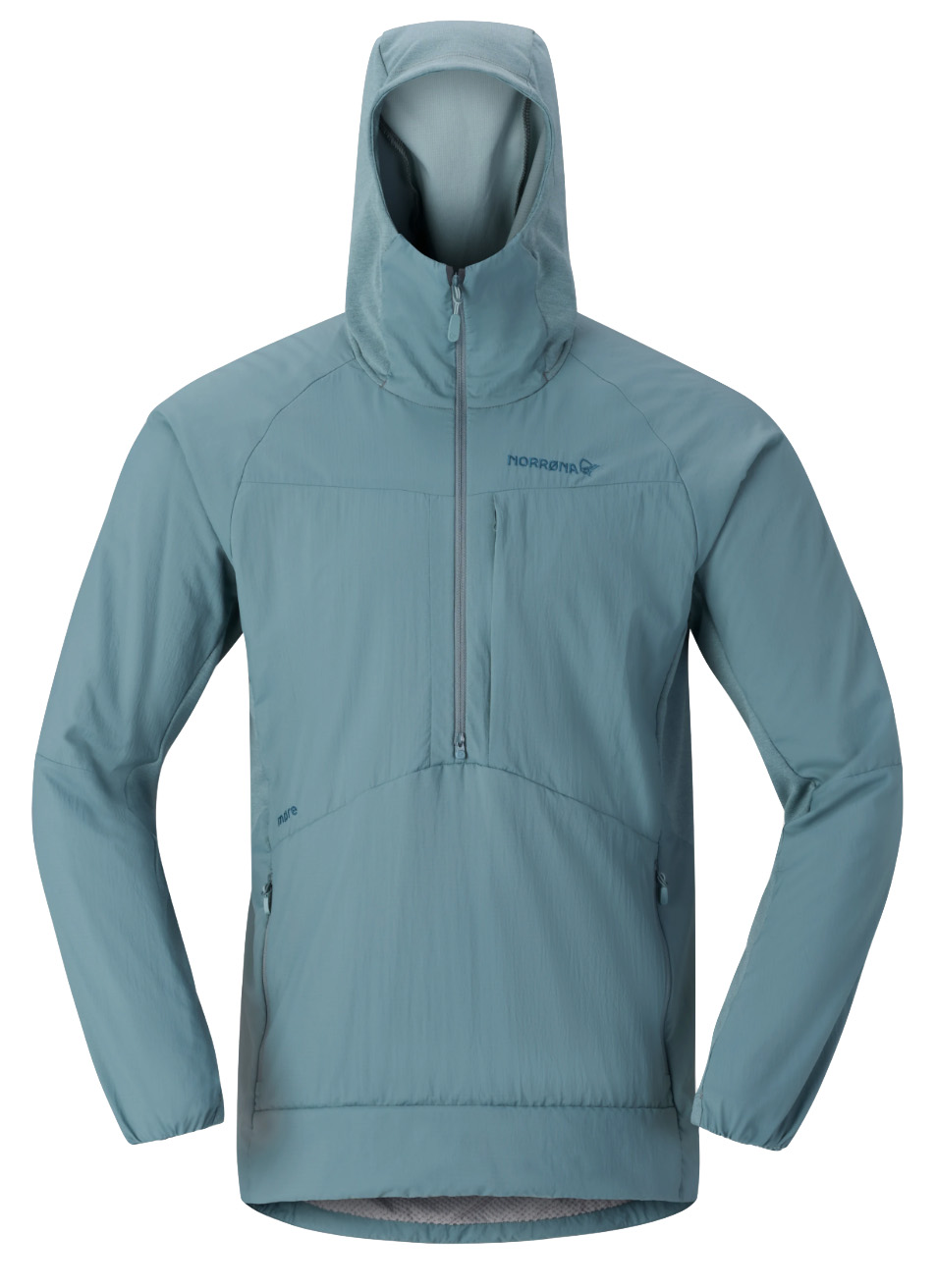 Insulation: Synthetic and fleece
Insulation: Synthetic and fleece
Weight: 12.7 oz.
What we like: Hybrid insulation and wind-resistant fabric nicely balance warmth, breathability, and protection.
What we don’t: Anorak style is tough to pull on; expensive.
Designed with backcountry travel in mind, Norrøna’s Møre Octa Zip hybrid fleece stands out for its smart balance of comfort and performance. For insulation, Norrøna opted for a functional mix of 105-gram Octa synthetic fill along the front and top of the arms, while thicker (168g) Warm1 fleece covers the sides, hood, back, and underarms. Rounding out the construction, Norrøna incorporated a wind-resistant fabric at the front and shoulders. The net result is an excellent balance of warmth, breathability, and wind resistance for heart-pumping activities in the cold. And importantly, all the smaller details are well sorted, including a versatile fit that’s trim enough for performance use but can accommodate a mid- to heavyweight baselayer underneath, a two-way zipper for regulating temperature, and a snug-fitting hood that stays in place even in blustery weather.
All that said, not everyone will love the Møre’s anorak style (there’s a reason it's the only partial-zip option on our list). Most notably, the pullover design isn’t easy to don when wearing a helmet, and the lack of stretch at the front results in some restriction when trying to wiggle it on. Additionally, while the front kangaroo pocket is generously sized and very soft against bare skin, it tends to sag if weighted down too much. Finally, the jacket’s warmth is limited for casual and low-output uses—you’ll likely need to add another layer when belaying or hanging around camp, for example. But the Møre has quickly become a go-to for everything from hiking and skiing to biking in cooler temperatures, and its flattering fit has earned us many compliments on the trail and around town.
See the Men's Norrøna Møre Octa Zip Hood See the Women's Norrøna Møre Octa Zip Hood
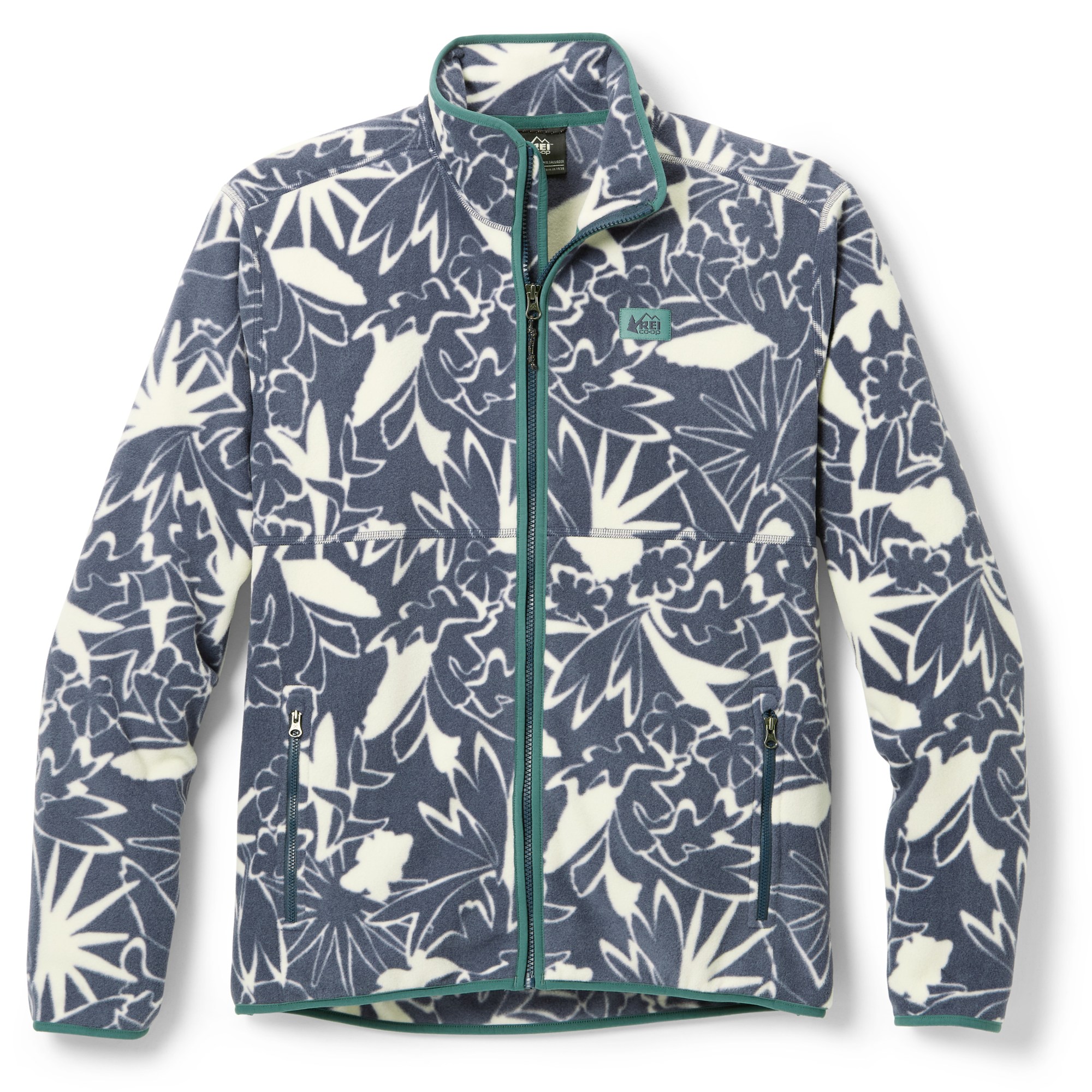 Insulation: Fleece
Insulation: Fleece
Weight: 12.7 oz.
What we like: Cheap, comfortable, and fun colorway selection.
What we don’t: Lacking in performance appeal and not adept at blocking wind.
The Columbia Steens Mountain 2.0 above is our favorite budget midlayer, but REI’s Trailmade is a close competitor at a similarly wallet-friendly price. For $14 more than the Columbia, the Trailmade delivers a cozy, ultra-soft fleece build that’s available in a range of fun colorways for both men and women. We’re also fans of the relaxed fit, which is ideal for layering and wearing casually around town. And despite its budget pricing, the Trailmade includes a few higher-end touches like a windflap backing the main zipper, drop-in pockets on the inside, and a spandex binding running along the collar, main zipper, hem, and cuffs.
However, like the Steens Mountain, the REI Trailmade is decidedly lacking in performance appeal compared to more specialized designs like the Patagonia R1 Air, Mountain Equipment Lumiko, and Norrøna offerings above. During testing, we found the Trailmade particularly susceptible to wind, and some users report pilling after several washes (although we haven’t experienced this ourselves after months of use). We also have some fit-related gripes that are specific to the women’s model, including sleeves that barely reach the end of our tester’s wrists. But for casual, low-output activities like hanging around camp, running errands in town, and short hikes, the Trailmade’s blend of style, comfort, and affordability is hard to beat.
See the Men's REI Trailmade Fleece See the Women's REI Trailmade Fleece
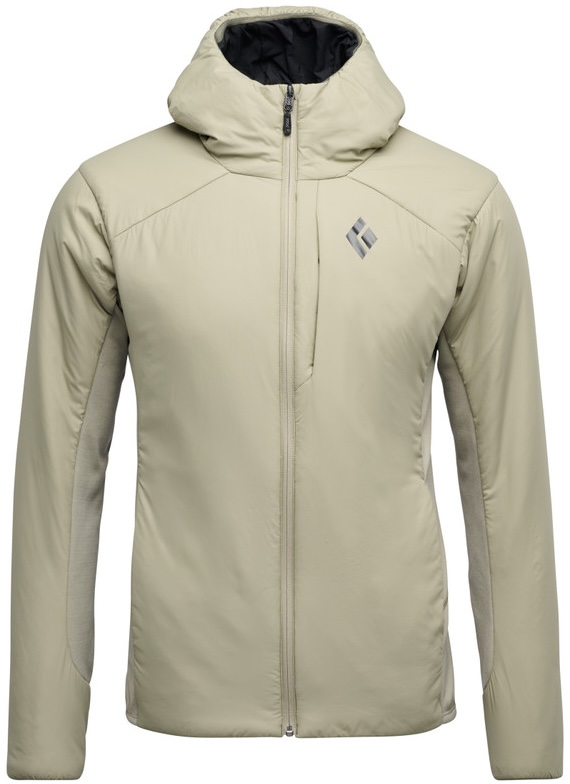 Insulation: Synthetic and merino blend
Insulation: Synthetic and merino blend
Weight: 12.7 oz.
What we like: Snug fit is ideal for layering or as a standalone piece for climbing.
What we don’t: Not as versatile or lightweight as the Patagonia Nano-Air Light Hybrid.
Black Diamond specializes in performance-oriented outerwear for climbing and skiing, and their First Light collection is home to a few nice midlayer options. We'd equate the First Light Hybrid Hoody to a mullet—business at the front, party in the back: You get PrimaLoft Gold Active insulation and a stretch-nylon shell with a PFAS-free DWR finish at the chest, hood, and arms; on the back and underarms, Black Diamond patterned a low-profile merino/polyester blend, which boosts breathability and freedom of movement and resists odors better than most synthetic materials. Tack on a helmet-compatible hood and chest pocket that converts to a stuff sack, and there's no question that the First Light Hybrid is made for mountain adventures.
We tested a previous version of the First Light Hybrid and had a lot of praise for the design. Unlike many synthetic jackets, which can have fairly roomy dimensions, the BD really felt like a midlayer with its trim shape and snug-fitting yet stretchy back. As a result, it layered very well under a shell while skiing and also became one of our go-to jackets for cold-weather rock climbing. All told, the First Light Hybrid Hoody isn’t too dissimilar from the Nano-Air Light Hybrid above in terms of intentions, although it’s slightly bulkier and doesn’t cross over quite as well for casual use. That said, it's nevertheless a great alternative for those who like the warmth and odor resistance of merino wool.
See the Men's BD First Light Hybrid Hoody See the Women's BD First Light Hybrid Hoody
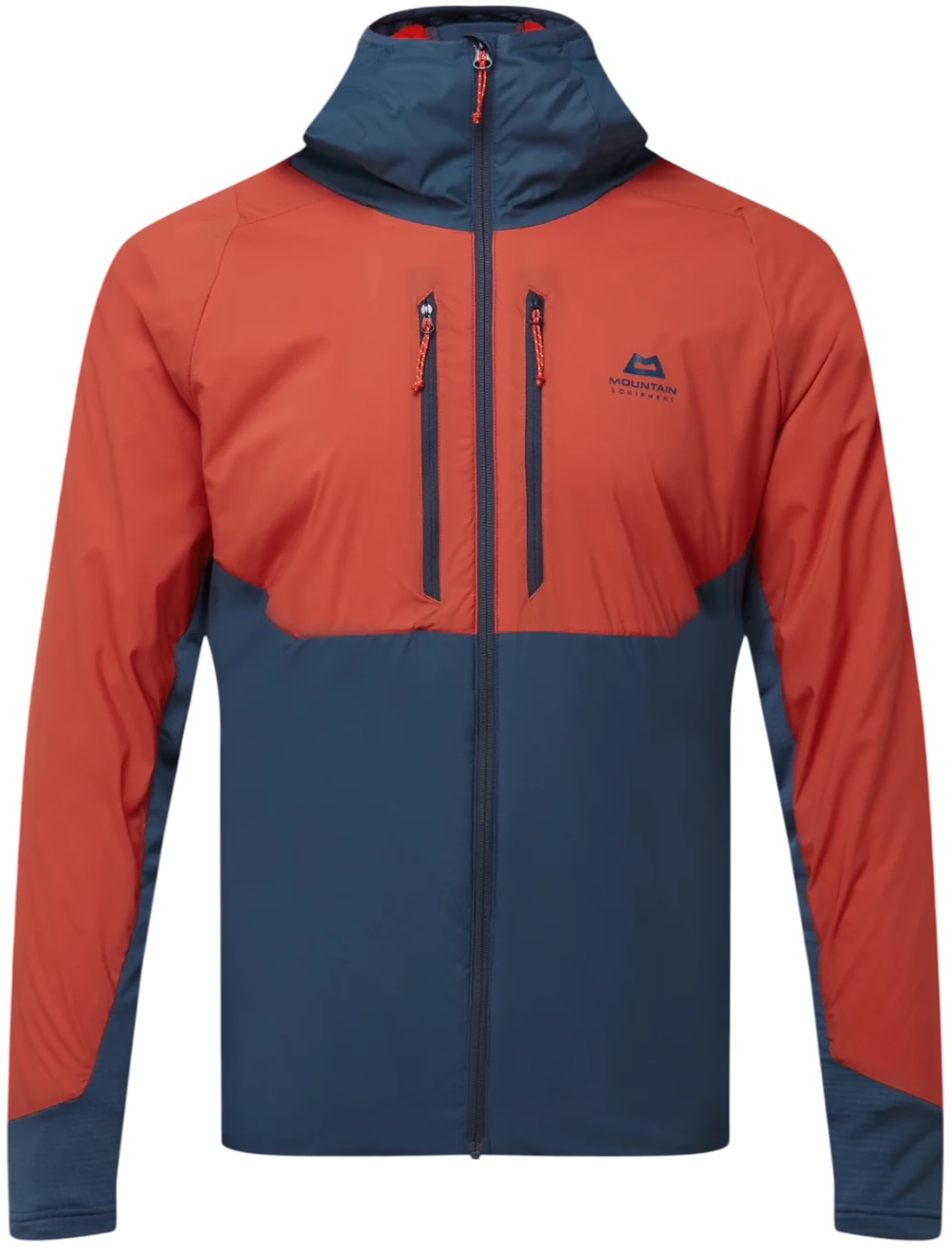 Insulation: Synthetic
Insulation: Synthetic
Weight: 12.0 oz.
What we like: A lightweight and athletic layer for active use.
What we don’t: Too technical for around town and among the most expensive on this list.
Mountain Equipment’s Switch Pro Hooded Jacket earns a spot among our top active insulators thanks to its thoughtful design and strong performance on high-output missions. Built with a 20-denier nylon face fabric, Octayarn Warp-Knit insulation, and breathable fleece panels along the underarms, sides, and hood, the Switch Pro balances warmth and ventilation well—ideal for hoofing it up steep skin tracks or pushing the pace on a trail run. The fleece panels not only allow for more airflow in sweaty areas, but add a nice dose of durability along high-wear areas like the cuffs. Our tester found the athletic fit non-restrictive and easy to layer under a softshell jacket when the weather turns sour. And despite weighing just 12 ounces, the Switch Pro doesn’t skimp on features, including two hand pockets, two zippered chest pockets, a full-length zip, and integrated thumb loops.
Like most other active insulators on this list, the Switch Pro isn’t warm enough to wear on its own during mild mid-winter activities—our tester was quick to toss a layer over it when the weather turned blustery or wet. And its trim silhouette and blocked colorway gives it a technical look that’s right at home in the backcountry, but doesn’t translate as well to casual use. The Switch Pro is also quite expensive at $300, and in our opinion, there are other jackets on this list that perform similarly at a lower price point (the Nano-Air Light Hybrid and Norrona More Octa Zip, to name a few). The price is also tough to swallow considering our tester experienced some signs of wear on the face fabric after just a few months of testing. Still, for fast-paced mountain missions where breathability, mobility, and a dialed fit matter most, the Switch Pro stands out as a capable and well-designed option.
See the Men's ME Switch Pro Hooded Jacket See the Women's ME Switch Pro Hooded Jacket
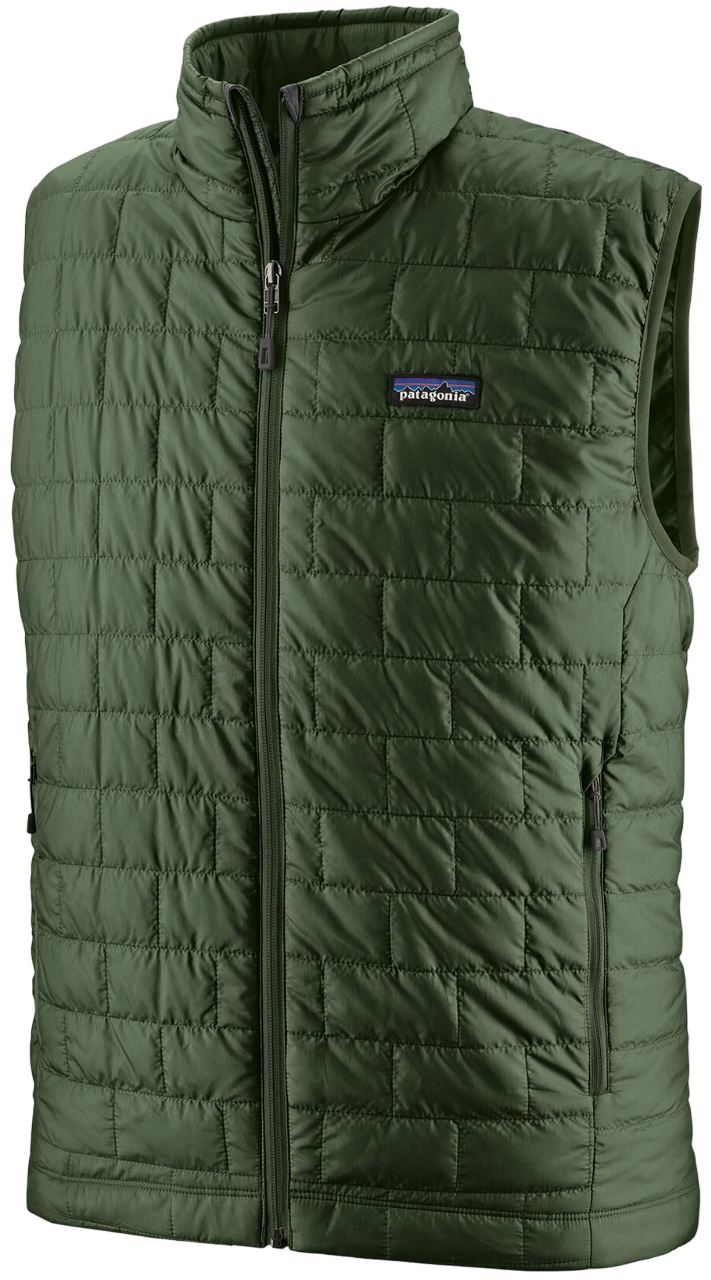 Insulation: Synthetic
Insulation: Synthetic
Weight: 8.0 oz.
What we like: Warmth where you need it most.
What we don’t: Less versatile as an outer layer.
For big efforts or mild conditions, there are a lot of reasons to opt for a vest over a jacket. Built to keep you warm in the core and minimize bulk and weight everywhere else, they're a minimalist choice and promote airflow better than most jackets. Vests also keep your arms free and unencumbered, which is great news for climbers, cross-country skiers, and even daily wearers. Within this category, the Patagonia Nano Puff Vest is one of our favorite designs, clocking in at just 8 ounces with a lightweight shell (20D) and 60-gram PrimaLoft Gold Eco insulation.
The Nano Puff is Patagonia’s most affordable synthetic insulated vest at $189, but there are some benefits to opting for the vest version of the Nano-Air. For $10 more, it’s the better design for high-output uses like cross-country skiing and winter running, with more breathable construction and a soft, body-hugging feel. On the other hand, we do prefer the more durable shell of the Nano Puff for casual use, especially when worn as an outerlayer. And finally, keep in mind that Patagonia also offers a number of fleece vest options for considerably less, but these lack the weather protection and sleek look of the aforementioned synthetic designs.
See the Men's Patagonia Nano Puff Vest See the Women's Patagonia Nano Puff Vest
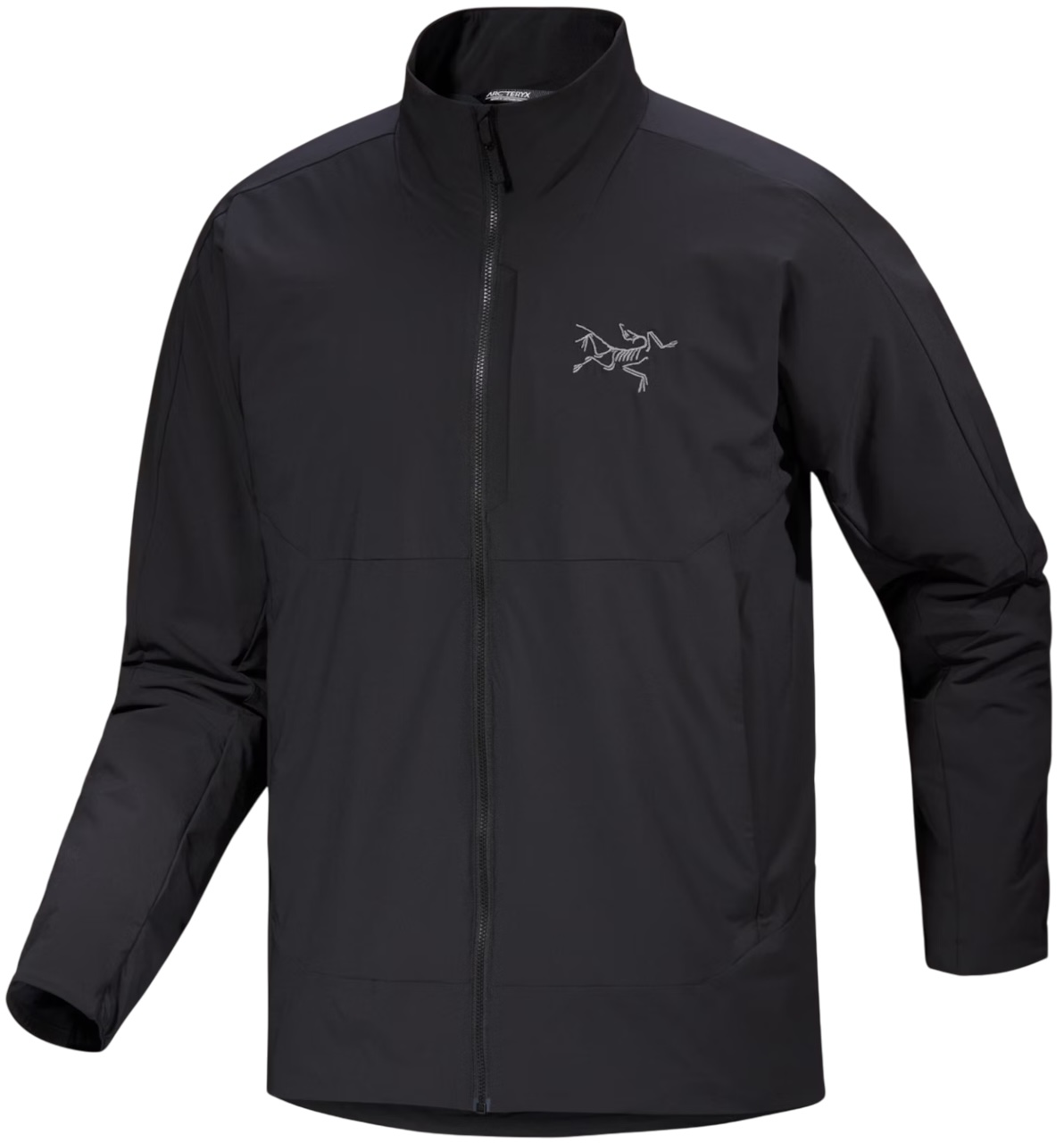 Insulation: Synthetic
Insulation: Synthetic
Weight: 13.6 oz.
What we like: Modestly insulated with a hard-wearing softshell face fabric.
What we don’t: Expensive and not the warmest or most breathable.
The Allium Insulated Jacket excels as a lightweight midlayer choice for both active and casual use. This streamlined layer features a light amount of Coreloft insulation (25g along the side and back, 40g at the front and arms) in a hard-wearing 50-denier softshell package. The face fabric is reinforced with a PFAS-free DWR coating that held up well to light rain and snow during testing, but retains an emphasis on breathability for high output pursuits. True to Arc’teryx’s design ethos, the Allium features a sleek silhouette with three low-profile pockets (two hand and one chest), an adjustable hem, and a tall collar that transitions well from the mountains to town. The fit falls between athletic and casual, making it easy to layer over a baselayer and under a hardshell when needed.
Compared to other Arc’teryx offerings, however, the Allium feels a bit underwhelming. While we appreciate the simplicity of a pared-down synthetic jacket, its $300 price tag is tough to justify. For context, the Atom Jacket above offers more insulation (60g Coreloft) at a slightly lower price ($280, though the hooded version is also $300) and arguably performs better as a crossover piece for casual use. Meanwhile, the Proton SL Hoody above delivers greater breathability and similar weather resistance also for $20 less. That said, the Allium does have an edge in durability—the 50-denier face fabric outclasses the thinner 20-denier materials on both the Atom and Proton SL—making it a more appealing option for those who tend to be rougher on their gear. Note: The women's Allium Insulated is currently unavailable, but we're confident stock will return in coming months.
Read more: Arc'teryx Allium Insulated review
See the Men's Arc'teryx Allium Insulated Jacket
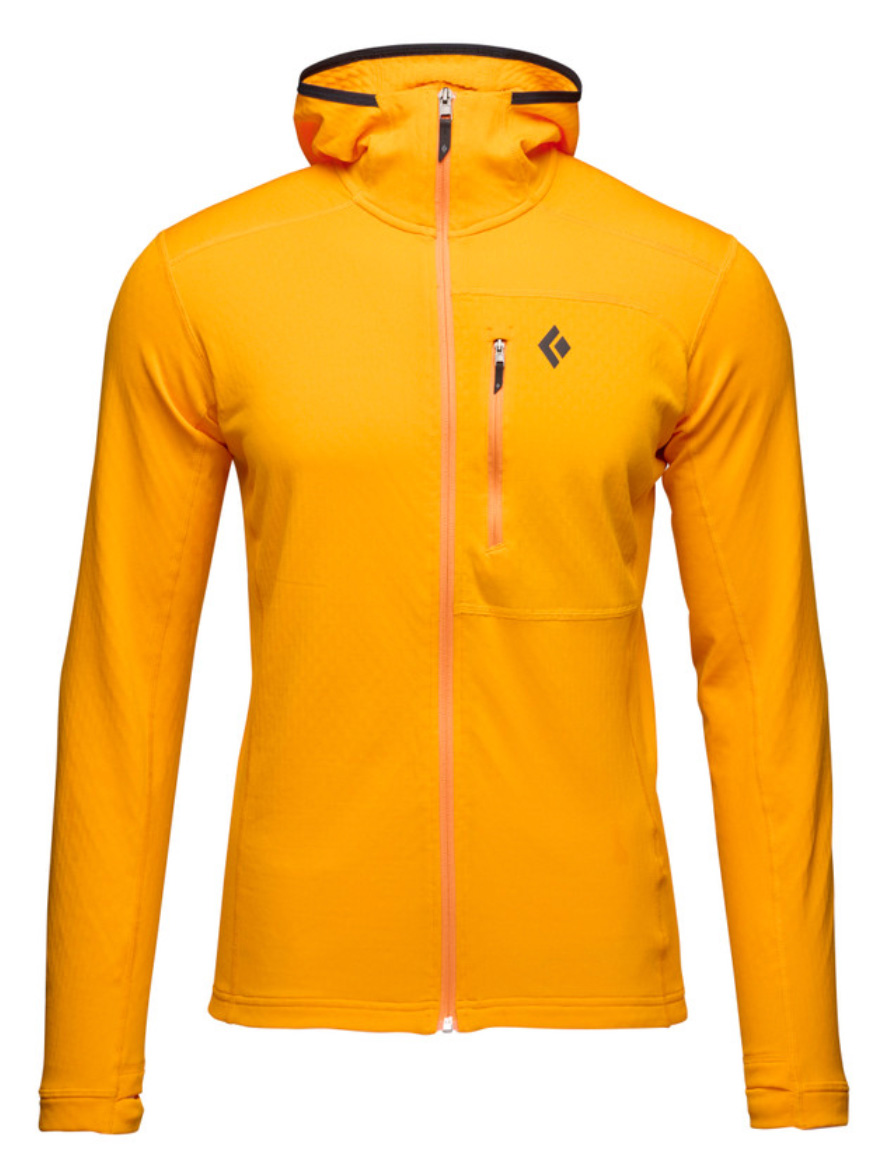 Insulation: Fleece
Insulation: Fleece
Weight: 1 lb. 4.5 oz.
What we like: A breathable and warm midlayer that won’t impede movement.
What we don’t: Pricey, heavy, and doesn’t double as an outer layer.
For climbers and backcountry skiers, a fleece can be a really nice midlayer choice. Not only do they breathe well and dry quickly, but many performance varieties manage to pack a lot of warmth into a fairly minimal build. The Black Diamond Coefficient is one such jacket: With gridded Polartec Power Grid fabric, the fleece traps heat inside the waffle-like construction, keeping you warm during trailside breaks or belays but letting air move around when you’re on the go. And its trim fit slides easily under a hardshell or windbreaker jacket (including an under-the-helmet scuba hood), eliminating the bulk you sometimes get from an insulated design.
The Coefficient offers similar levels of warmth as the Patagonia R1 Air Hoody above. But where the Patagonia prioritizes breathability, the Black Diamond boosts protection and durability with its brushed fleece shell. To be sure, the Coefficient can't match the weather resistance of synthetic jackets like the Arc’teryx Atom, but it's a decent outer layer in clear conditions, similar to the Kyanite above (for 6.6 oz. more and with significantly less warmth). Black Diamond doesn’t quite match brands like Patagonia and Arc’teryx in terms of build quality, but the Coefficient is undeniably a comfy and high-performance fleece option. It’s also worth mentioning the Coefficient LT Hybrid—one of our favorite hybrid fleeces of late—which features a thin, baselayer-like material and tacks on an insulated front panel for additional warmth and weather resistance.
See the Men's Black Diamond Coefficient See the Women's Black Diamond Coefficient
| Jacket | Price | Type | Insulation | Weight | Packable |
|---|---|---|---|---|---|
| Arc’teryx Atom Jacket | $280 | Synthetic | 60g Coreloft Compact | 11.8 oz. | No |
| Columbia Steens Mountain 2.0 | $46 | Fleece | Polyester fleece | 14.4 oz. | No |
| Patagonia Micro Puff | $279 | Synthetic | 65g PlumaFill | 10.4 oz. | Yes |
| Arc’teryx Cerium Jacket | $380 | Down/synthetic | 850-fill down; Coreloft | 10.6 oz. | Yes |
| Patagonia R1 Air Full-Zip Hoody | $179 | Fleece | Jacquard fleece | 12.9 oz. | No |
| Patagonia Nano-Air Light Hybrid | $249 | Synthetic/fleece | 40g FullRange; R1 Air fleece | 10.5 oz. | No |
| REI Co-op 650 Down Jacket | $129 | Down | 650-fill down | 10.9 oz. | No |
| Norrøna Falketind Alpha120 | $219 | Fleece | 120 & 139g Polartec | 9.9 oz. | No |
| Arc'teryx Proton SL Hoody | $280 | Synthetic/fleece | 98g Octa Loft | 13.1 oz. | No |
| OR SuperStrand LT | $199 | Synthetic | VerticalX SuperStrand | 10.9 oz. | Yes |
| Mountain Equipment Lumiko | $120 | Fleece | Lumiko stretch fleece | 9.5 oz. | No |
| Patagonia Down Sweater | $279 | Down | 800-fill down | 13.0 oz. | Yes |
| Arc'teryx Kyanite Jacket | $180 | Fleece | Polartec Power Stretch Pro | 13.9 oz. | No |
| Norrøna Møre Octa Zip Hood | $249 | Synthetic/fleece | 105g Octa; 168g Warm1 | 12.7 oz. | No |
| REI Co-op Trailmade Fleece | $60 | Fleece | Polyester fleece | 12.7 oz. | No |
| Black Diamond First Light Hybrid | $275 | Synthetic/merino | PrimaLoft Gold Active; wool | 12.7 oz. | Yes |
| Mountain Equipment Switch Pro | $300 | Synthetic | Octayard Warp-Knit | 12.0 oz. | Yes |
| Patagonia Nano Puff Vest | $189 | Synthetic | 60g PrimaLoft Gold Eco | 8.0 oz. | Yes |
| Arc’teryx Allium Insulated Jacket | $300 | Synthetic | 25 & 40g Coreloft | 13.6 oz. | No |
| Black Diamond Coefficient Hoody | $185 | Fleece | Polartec Power Grid | 1 lb. 4.5 oz. | No |
Midlayers are often the unsung heroes of a dialed-in layering system. Feature-rich or blissfully simple, they come in many fits, cuts, and materials, and some can also function as your outer layer depending on the weather and your chosen activity. This guide was created in 2015 by former editor-in-chief John Ellings and started with eight premium picks. Current editor-in-chief Penney Garrett and editor Maddie Downie took over in 2024, and we now spotlight 20 options, spanning everything from vests to hooded jackets. John, Penney, and Maddie love to play outside in all kinds of weather and for all kinds of activities. From backpacking to skiing to climbing, midlayers almost always play a role in a proper adventure.
The vests, jackets, and hoodies outlined in this guide were chosen after careful consideration and with the input of many experts and community members. When we take these layers out into the field for testing, we assess everything from the type of insulation to the specificities of the cut. We consider additional features such as breathability, water-resistant treatments, craftsmanship, and overall weight and heft. How easy is the piece to layer over or under? If there's a hood, is it helpful or does it just get in the way? Thanks to the broad usefulness of midlayers, we test them year-round and will amend this guide as we try out new (and new-to-us) pieces and find our favorites.
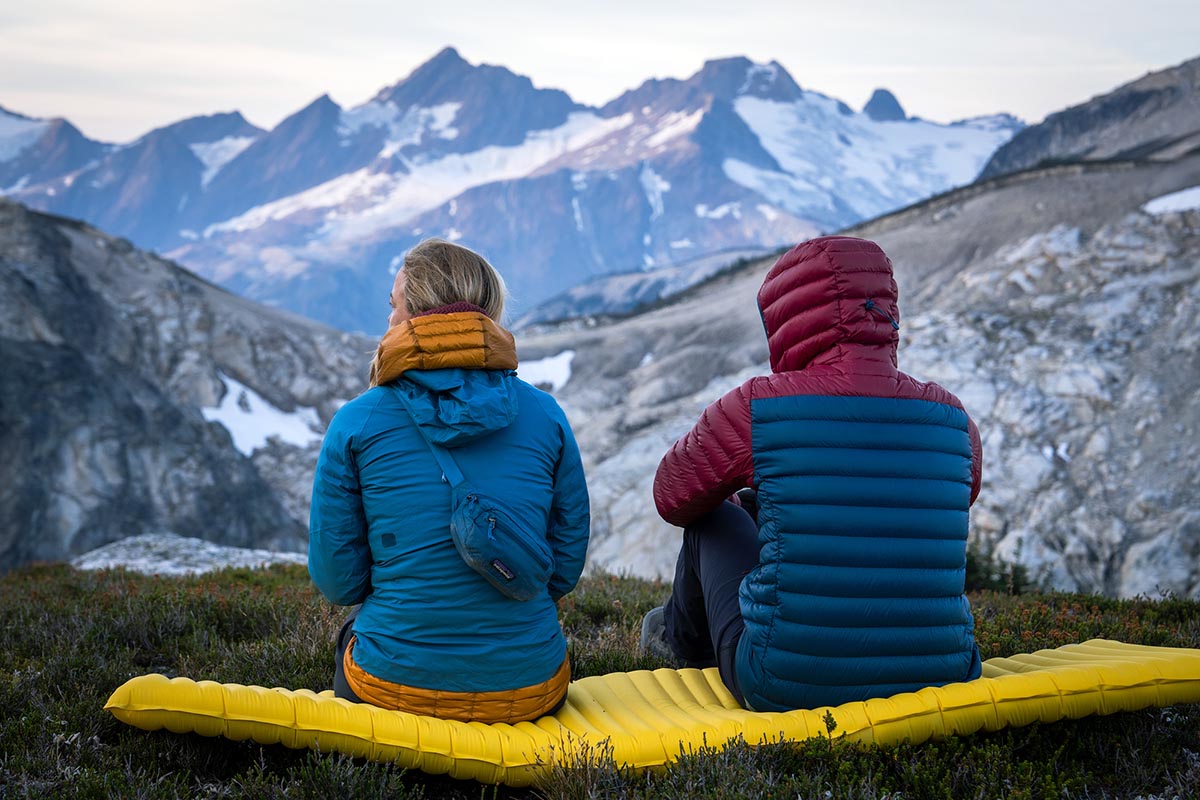
Fleece
A skiing midlayer classic, the fleece jacket is a comfortable and affordable way to stay warm. In spite of what the name may indicate, fleece is a wholly manmade synthetic made up of petroleum products. Many new models are made of plastics such as recycled bottles, and through a rather impressive process, out comes a cozy and soft fleece. These jackets are wonderful as a midlayer for skiing thanks to their ability to resist absorbing moisture and their fast drying time. Additionally, cost is a big reason for choosing a fleece, even if they do have a tendency to pill up over time.
As far as warmth is concerned, fleece jackets are most often measured in terms of fleece weight. A lightweight fleece—Patagonia's R1 Air and the Norrøna Falketind Alpha120, for example—is a thin and relatively packable option that breathes very well but isn’t as warm. These are great for mild-weather skiing or high-exertion activities like backcountry skiing and climbing. Midweight fleeces are the most popular style due to their versatile warmth, and include models like the Black Diamond Coefficient Hoody and Arc'teryx Kyanite. These jackets are insulating enough for most cold days but don’t compromise much in the way of breathability. Finally, heavyweight fleeces are the bulkiest and warmest in their class, which limits their use to casual environments or truly cold days on the slopes.
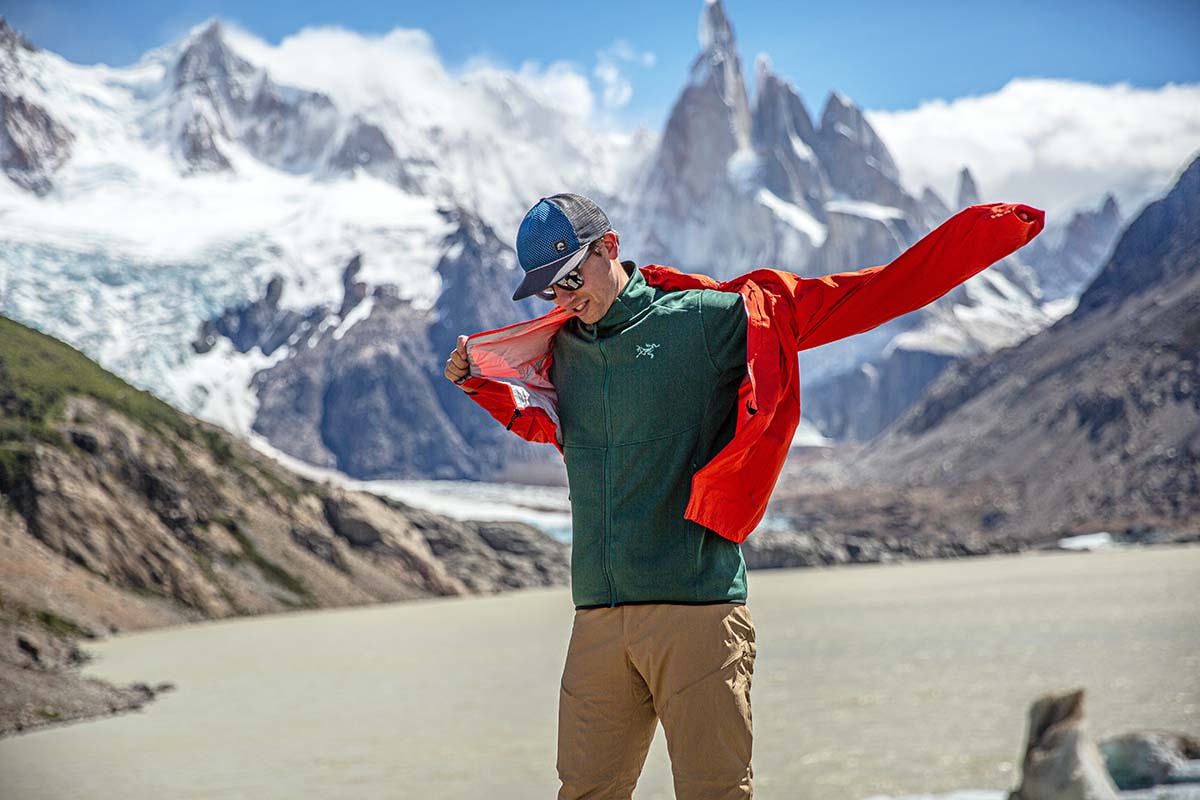
Synthetic Insulation
Opting for a synthetic jacket will most often involve a slight step up in cost from a fleece but comes with reduced bulk and often a more weather resistant shell. And as an upgrade from down fill, synthetics are more breathable and continue insulating when wet. PrimaLoft was the first big name in synthetic insulation, but in recent years we’ve seen a variety of new blends come to market with a range of intentions. Outdoor Research's VerticalX SuperStrand and Patagonia’s PlumaFill, for example, seek to mimic the weight and compressibility of down, while other insulations prioritize breathability (like the impressive FullRange insulation used in Patagonia's Nano-Air Light Hybrid Jacket). Depending on your needs, there’s likely a synthetically insulated jacket ideal for the job, and we particularly like highly breathable options for active resort or backcountry skiers.
Synthetic insulation is measured in grams, which is how much insulation a 1 x 1 meter section of the fibers weigh. Lightweight synthetics will have approximately 40 to 60 grams of insulation, and midweights are closer to 100 grams. Once you reach the midweight category, you are dealing with a very bulky jacket, which is why the 60-gram choice is so popular. It’s light and easy to move in, making it perfect as an all-around ski midlayer.
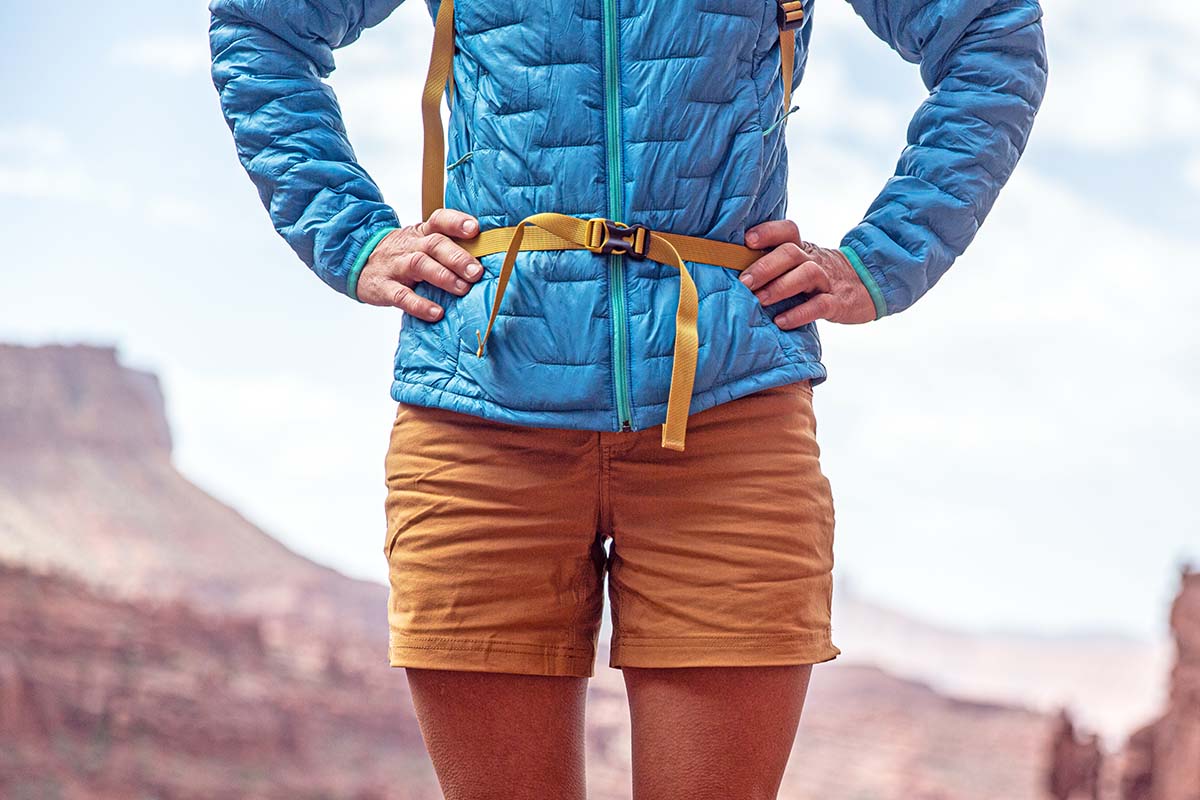
Down Insulation
Despite impressive innovation in synthetic materials, there’s still no match for the warmth, lightweight, and packability of natural goose or duck plumage. There is simply no better way to stay warm than a down jacket, as long as you avoid heavy moisture—down will clump up and stop insulating when wet. If you really make an effort to stay dry with a bombproof shell, or for dry and cold conditions found in areas like Utah, Colorado, or parts of the East Coast, a down jacket is a perfect fit. On positively frigid days, an option like the venerable Arc’teryx Cerium Jacket remains a go-to choice.
In comparing down jackets, the two most important specifications are down fill power and fill weight. These are two independent measurements, but taken together they will give you an indication of how warm the jacket will be. To start, fill power is a measurement of the quality of the down clusters. Because down relies on loft to trap heat against your body, a jacket that requires fewer clusters to achieve the same amount of loft will be equally as warm but weigh less. As a result, you pay more for a higher fill power. Mid-range fill power falls in the 550 to 650 range, and high-end jackets will have 700+, reaching as high as 1,000 for some brands like Montbell. Fill weight is the next metric, and this is simply the total amount of down in the jacket, given in ounces. Now remember, weight isn’t the only indicator and should be looked at alongside the fill power, but it remains a very helpful number in figuring out jacket warmth.
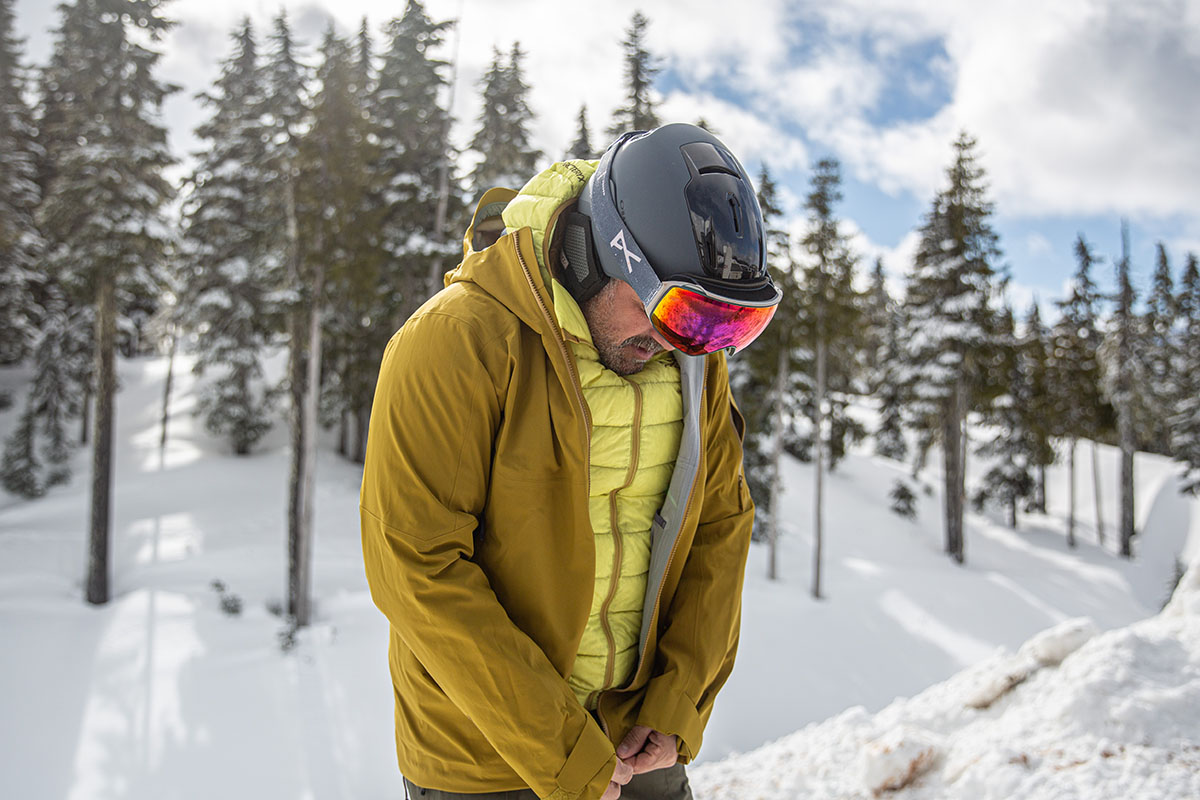
Wool
Many of our favorite baselayers are made with merino wool, due to its comfort, warmth, and ability to resist odor better than synthetic materials. And while this natural alternative isn’t seen as often in midlayers, it can go head-to-head with synthetics in terms of warmth (even when wet) and temperature regulation. But this all-natural insulator does have its downsides: Wool can be more of a hassle when it comes time to do the laundry, and it lacks the warmth-to-weight ratio of down. As a result, we most often see it mixed in with a hybrid insulation design, like the wool blends seen in the Black Diamond First Light Hybrid.
Warmth
Your preferences on warmth will depend on a number of factors, including where you ski and the conditions you’re willing to go out in, as well as considerations like if you use an insulated ski jacket or just a shell. Warmth will vary no matter the choice, but the most efficient heater is the down jacket. The clusters of feathers offer unmatched warmth relative to the weight of the garment. And choosing a higher fill-power option will have the best warmth-to-weight ratio.
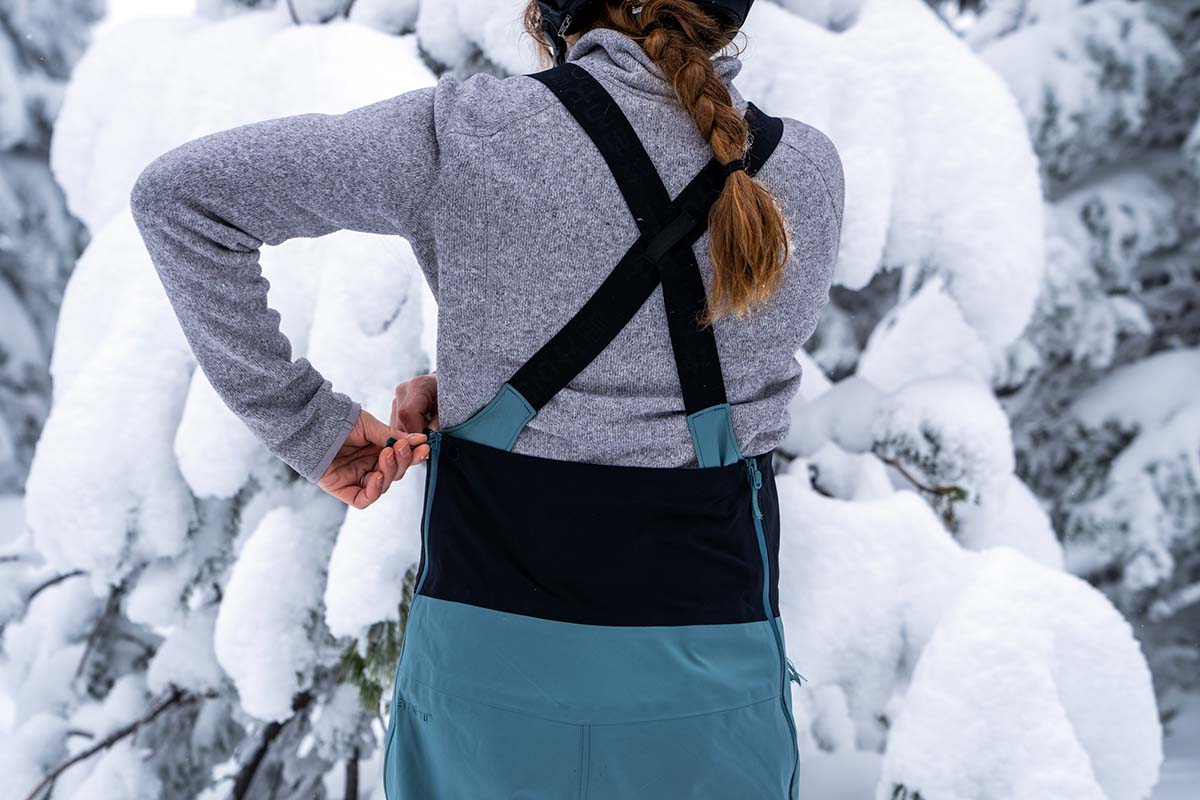
Another natural insulator, wool offers cozy warmth and comes with the benefit of resisting odors better than other materials. However, wool’s warmth-to-weight ratio is less impressive, and it’s often on the expensive end of the spectrum. Next in line is synthetic insulation, which is sometimes referred to as a synthetic down because it was designed to emulate the heat-capturing abilities of the duck or goose clusters. While not as efficient in heating for the weight (some designs like the Patagonia Micro Puff and Outdoor Research SuperStrand LT are getting close), synthetic jackets are still a great choice for skiing in typical resort conditions.
A fleece jacket may be at the bottom of our warmth list, but that's not to say you can’t find a very warm fleece coat. It just takes a lot of fleece to get you there. And for many skiers (us included), a bulky jacket can interfere with the fun, which puts fleece at the bottom of our warmth scale.
Down: Excellent
Synthetic: Very good
Wool: Good
Fleece: Not good
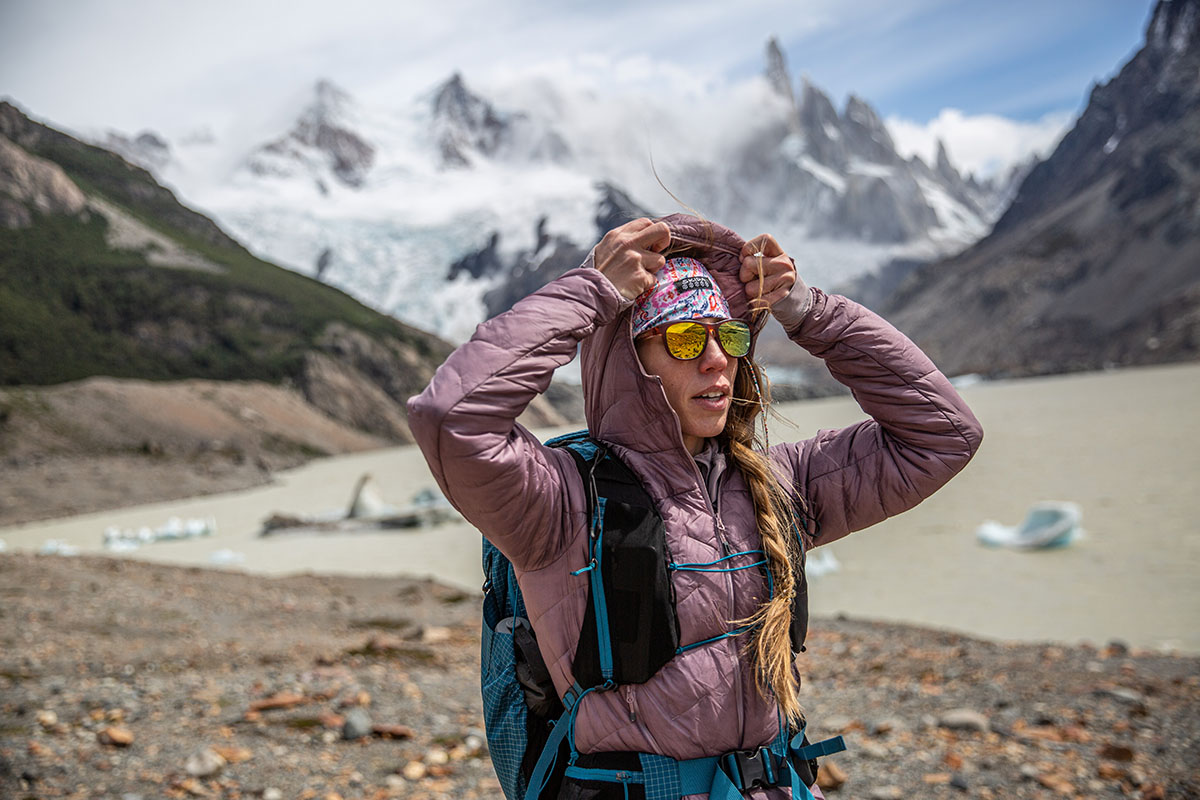
Snow and Wet-Weather Protection
This category is where the down jacket struggles in relation to the other three. If your down jacket is poking out the bottom of your shell and you plant yourself in some wet snow (the Pacific Northwest variety comes to mind), the jacket’s ability to insulate will be compromised. One of the appeals in moving to synthetic, fleece, or wool insulation is the fact that they are still able to retain some insulating properties when wet (as a downside, wool can grow very heavy when saturated). Fleece is top of the class in terms of warmth when wet (due in part to the naturally hydrophobic nature of the polyester construction) and can also dry faster than synthetic fibers. However, many synthetic jackets will add a DWR coating to their shell to bead water, making them a far more suitable outer layer option than fleece.
Synthetic: Very good
Fleece: Good
Wool: Good
Down: Not good (even hydrophobic down falls short)
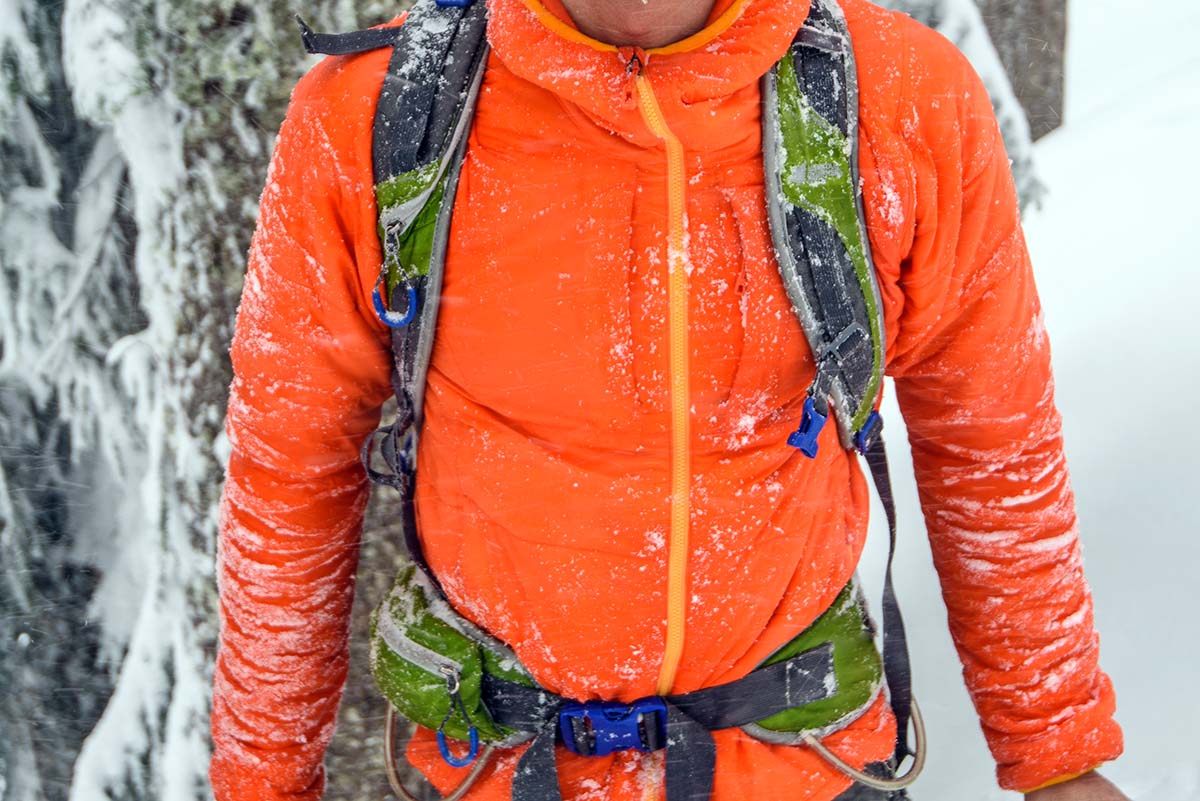
Breathability
Breathability is another strong suit of fleece, synthetic, and wool insulation. Overall, we give the edge to fleeces, which are naturally porous, and new models like the Patagonia R1 Air open up even more avenues for hot air to escape. Wool comes in a close second—this natural insulator excels at temperature regulation and, as a bonus, minimizes odor retention. Synthetic jackets like Arc’teryx's Atom Jacket offer great breathability for active use, but the category as a whole can be hit or miss (we often overheat in the Patagonia Micro Puff, for example). Unfortunately, down jackets are on the outside looking in here. Their supreme warmth retention doesn’t breathe nearly as well as the other options (and working up a sweat can lead to the insulation getting wet and losing its ability to keep you warm).
Fleece: Excellent
Synthetic: Very good to excellent
Wool: Good
Down: Not good
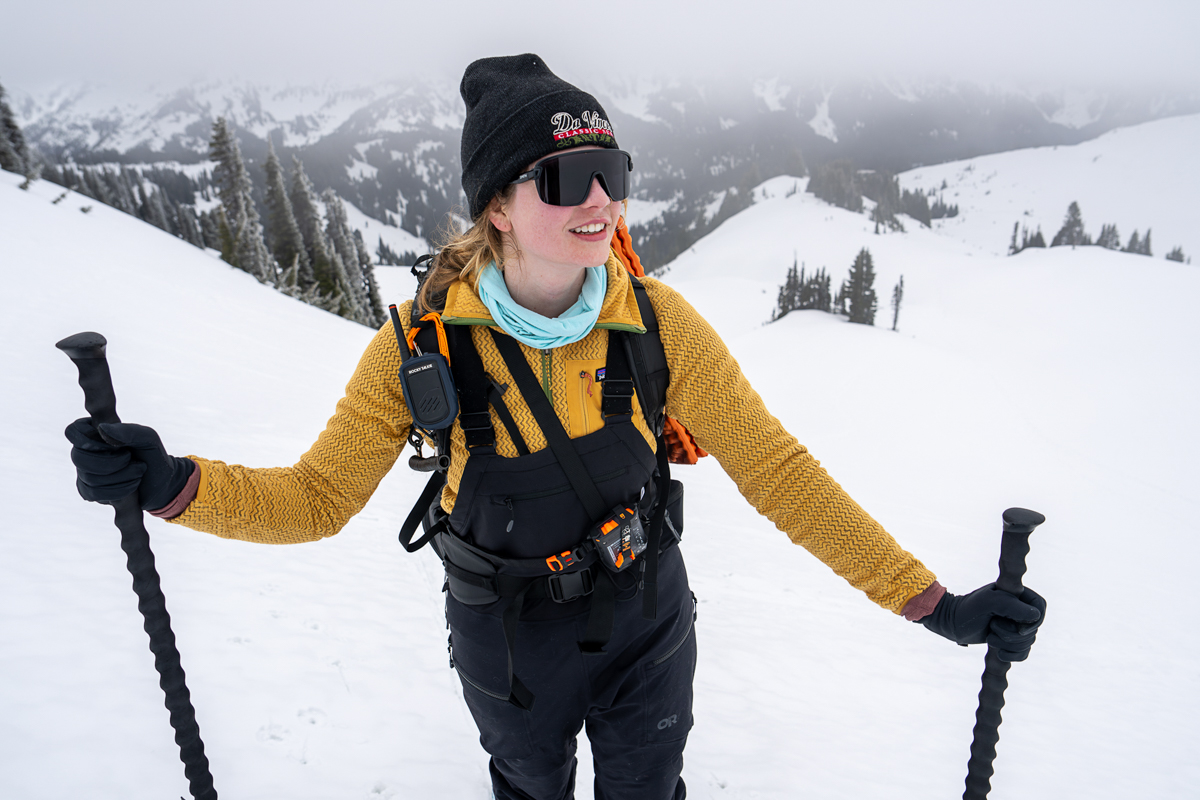
Weight and Compressibility
For the backcountry explorer who needs to throw a warm layer in their pack to stay comfortable at mealtimes, the down jacket remains the best choice. An 800-fill-power down jacket with a thin shell is capable of compressing down to the size of a grapefruit (although over-compressing for long periods can damage the feathers, so don’t go too crazy). Synthetics and wools (often wool/synthetic blends) vary quite a bit in compressibility. Lighter-weight options like the Patagonia Micro Puff and Outdoor Research SuperStrand LT are impressively compressible and can match a down piece, while others lag behind. Fleece jackets aren’t really all that compressible, and throwing a mid or heavyweight fleece into a pack can make for a challenging endeavor.
Down: Excellent
Synthetic: Good to excellent
Wool: Good
Fleece: Not good
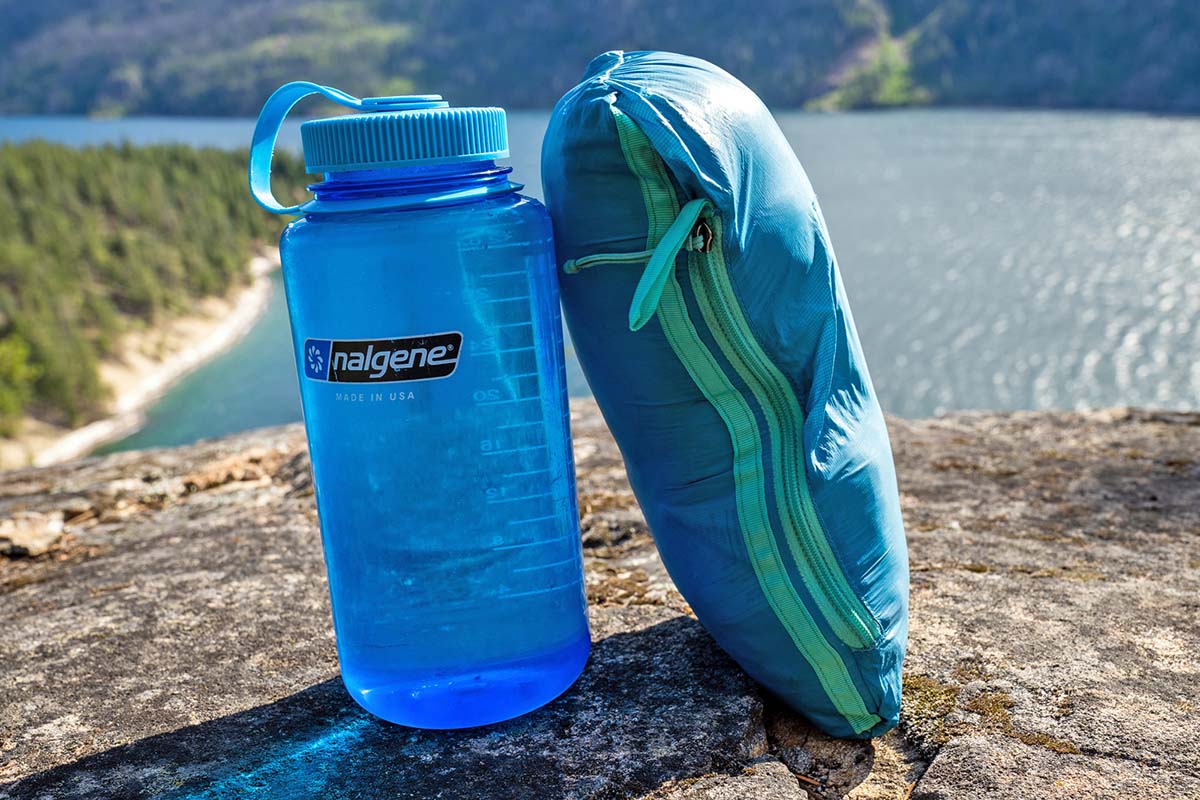
Durability
Insulated synthetic, down, and wool jackets vary from super-thin ultralight shells that are vulnerable to tears to tough jackets that you can throw on and forget about. In terms of the insulation itself, down and wool have long lifespans (and will continue to provide warmth as long as the shell of the jacket is intact), whereas synthetic materials tend to pack out. The durability of a fleece on the other hand is usually quite good. They’ll pill up over time and it’s possible to put a hole in a fleece by snagging it on a sharp object or catching a wayward campfire spark, but they’re typically abrasion-resistant and long-lasting in general.
In addition to the insulation, it’s important to consider the durability of your jacket’s shell fabric. The near-constant friction between your midlayer and outer shell jacket can cause abrasions and potential tears should a zipper catch the outer shell of your midlayer. In our opinion, because a couple extra ounces of weight are rarely a cause for concern while resort skiing, it’s worth it to get a more durable jacket. For insulated jackets, this means a tear-resistant fabric that is 20-denier (denier is a measurement of fabric thickness) or more. For example, a jacket like the Patagonia Down Sweater has a great combination of sufficient toughness (20D) and minimal bulk, while the Micro Puff’s 10-denier shell is too fragile for heavy use.
Fleece: Very good
Down, Synthetic, & Wool: Varies, but can be good
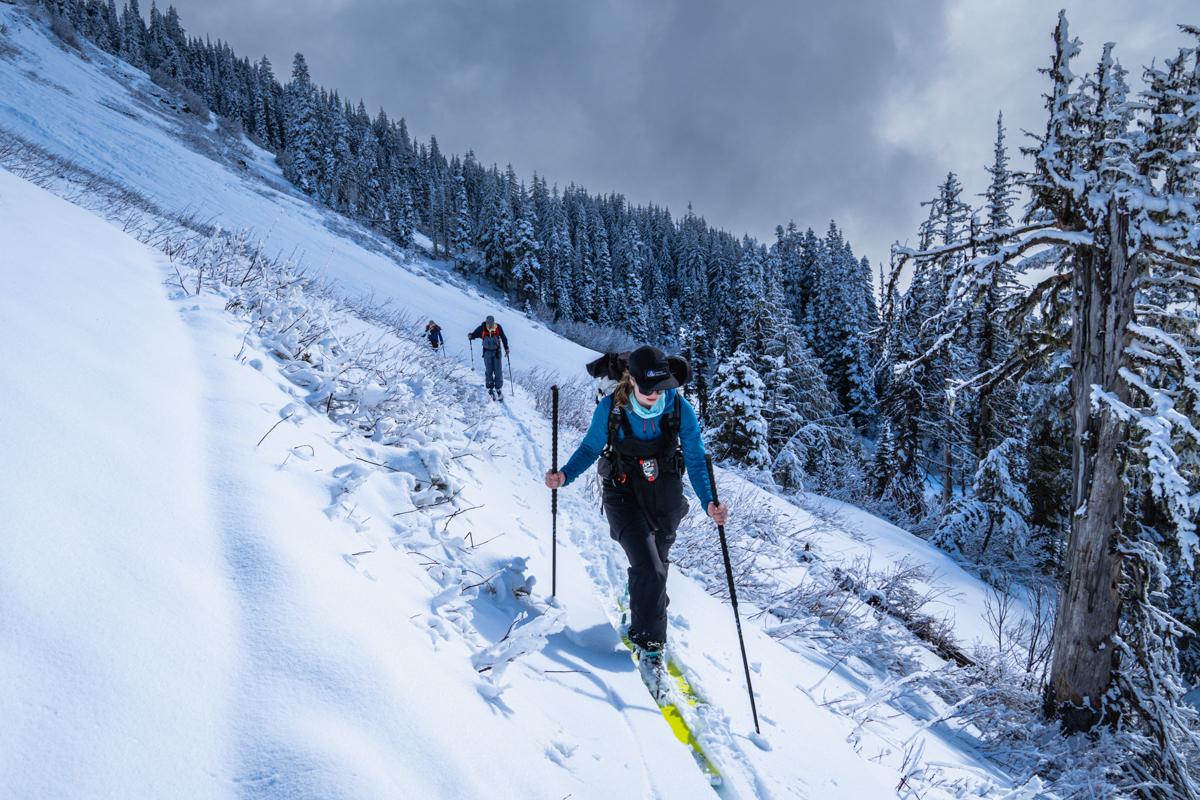
Fit plays a very large role in an effective midlayer. Too much extra fabric and you will have bunching and general discomfort underneath your shell, and a jacket that’s too trim will restrict your mobility. It’s best to find that middle ground where you have complete freedom of movement without the jacket riding up, and no excess bulk. We prefer a jacket that has a non-boxy cut that allows us to wear a similarly athletic-fitting outer layer over the top. Arc'teryx in particular seems to consistently make jackets with this type of fit. As you're trying on midlayers, be aware of the normal pinch areas: around the waist, in the shoulders, and under the arm pits.
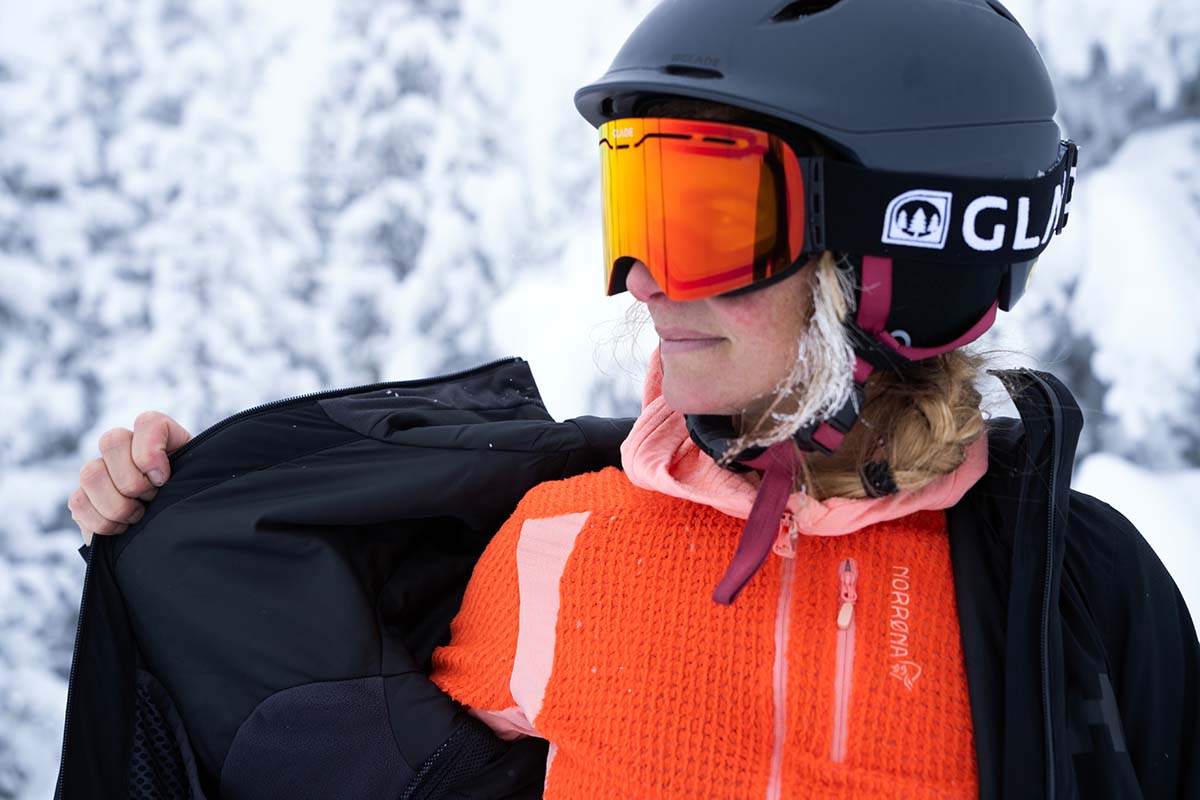
Deciding whether or not to opt for the hooded or non-hooded version of a midlayer might seem like a relatively inconsequential decision, but it’s actually deserving of some thought. For the most part, we prefer a non-hooded midlayer, particularly when we know we’ll be layering it under a hardshell or ski jacket. A hood is prone to bunching up behind the neck under an outer layer, and it can be cumbersome to don both midlayer and shell hoods at the same time. Further, if you’re like us and participate in activities where you wear a helmet (skiing, climbing, biking, etc.), keep in mind that most midlayer hoods are not helmet compatible.
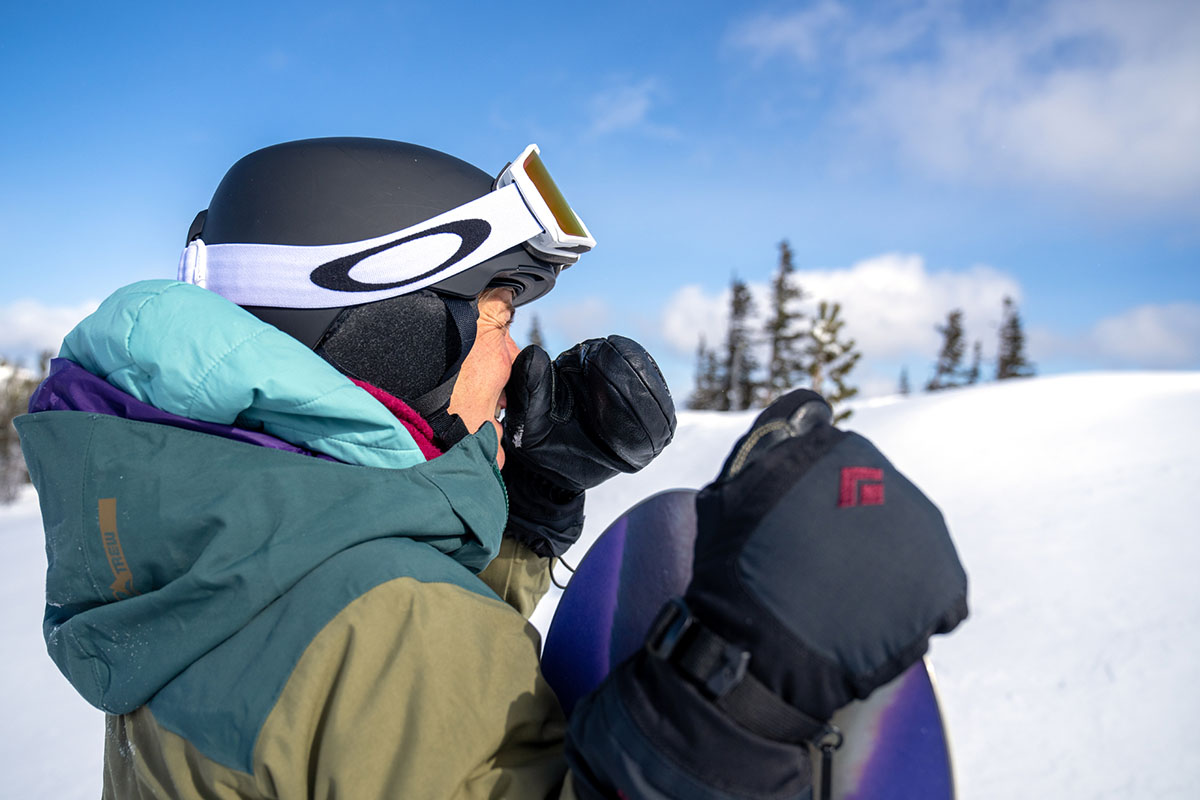
But there are a few scenarios where we love a hooded midlayer. For one, if we are wearing a helmet, a svelte hood worn underneath can provide a good deal of warmth for both the head and neck, and will prevent snow from entering the jacket at the collar. Second, if we think we’ll be wearing our midlayer as an outer layer (which we often do with jackets like the Arc’teryx Atom or Patagonia Down Sweater), we love the extra warmth and protection of a hood. In the end, the decision of hood vs. no hood will come down to one of personal preference, and it’s important to know how you’ll be using your midlayer when considering your needs.
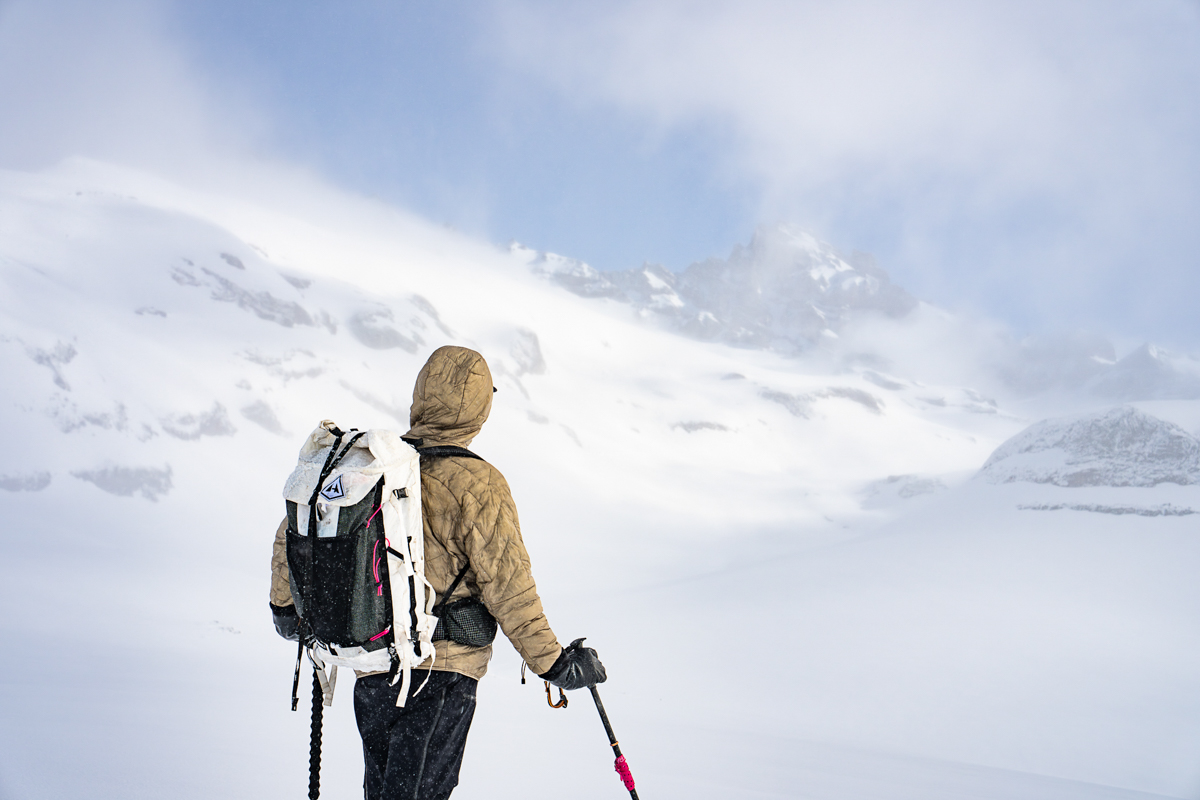
Midlayers are fairly simple pieces, especially considering they’re meant to hide under your weatherproof outer layer. Feature sets are often limited to pockets, thumbholes, and hoods (which we discussed above). It’s true that most folks don’t use the pockets of their insulating layers on the slopes or in the backcountry all that often—it’s a pain to have to unzip a couple layers. However, midlayers are a classic choice for daily use, so don’t dismiss pockets completely. And if you’re eying a very technical piece that goes without pockets and you plan to use it around town, you may want to reconsider. Case in point: A more all-around choice may be the Arc’teryx Atom Jacket (which features three total pockets) as opposed to the lightweight Black Diamond Coefficient Hoody, which has only one chest pocket.
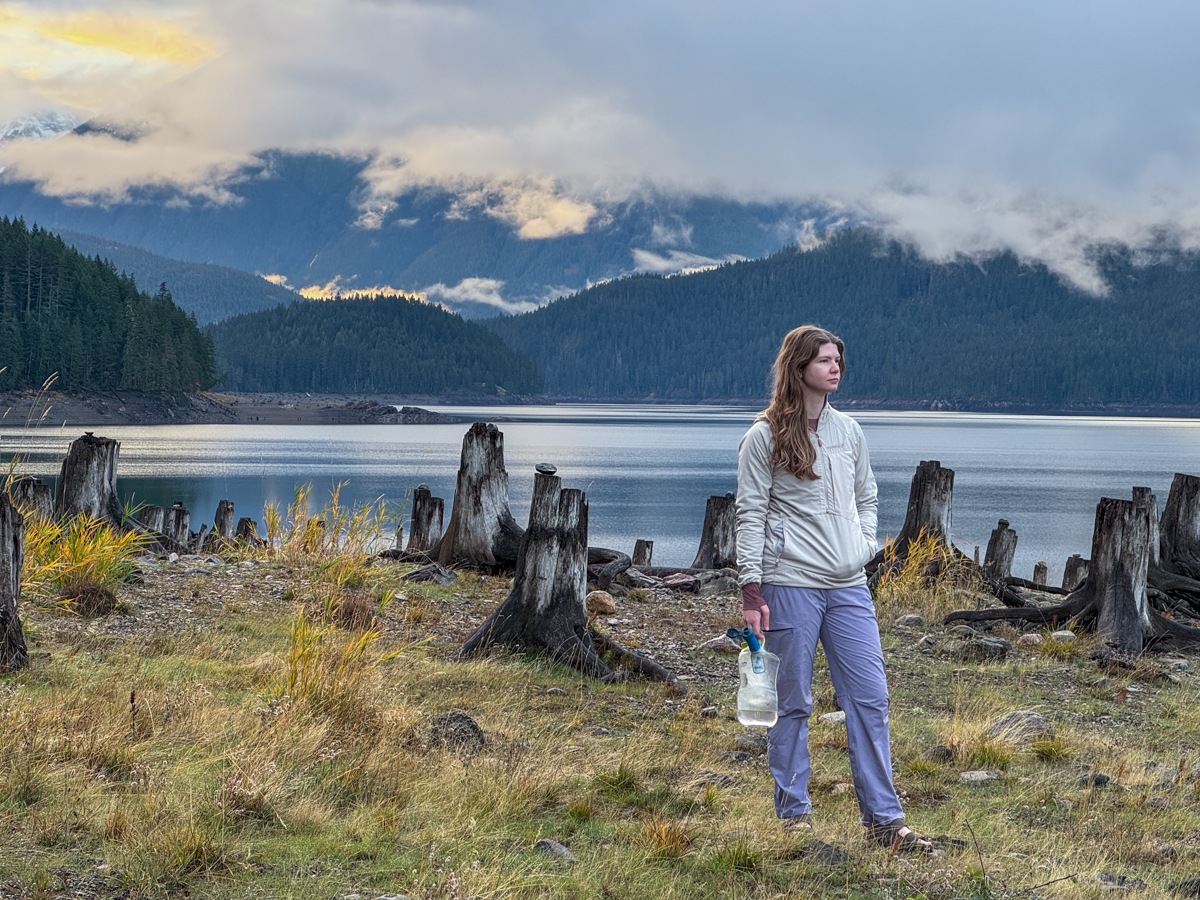
Performance midlayers occasionally will have thumbholes built into the sleeves. While serving as an opening for cold air to sneak in when not in use, the openings work well for keeping the sleeves in place during high effort activities or when taking on and off layers. User tip: If you’re eyeing a jacket that has this feature, we recommend checking to make sure the fabric around the thumbhole has some stretch so it doesn’t feel like your thumbs are being yanked around every time you extend your arms.
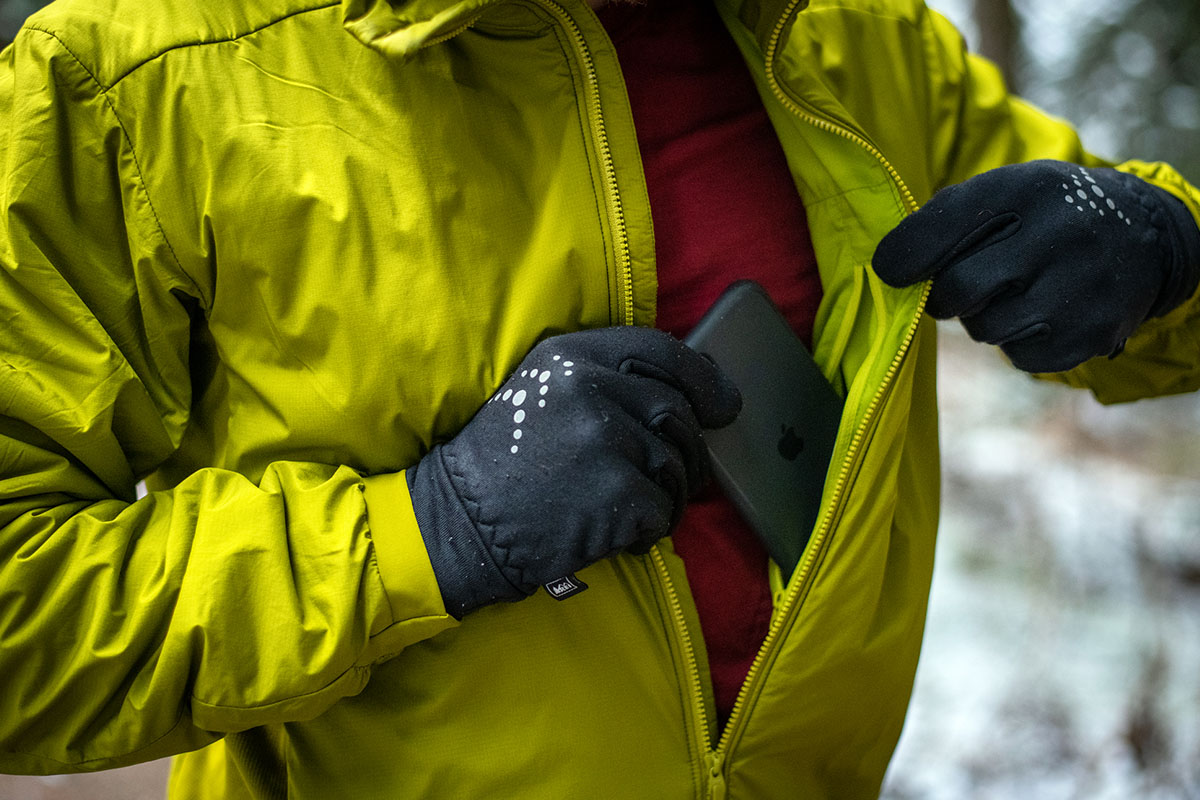
In 2025, many consumers are factoring sustainability into their purchasing, and there's a lot of considerations to be made when selecting a midlayer. Among down, synthetic, fleece, and wool options, none are without blame. But there are steps that outdoor companies are making to lessen their footprint and make positive changes for our planet.
In terms of down and wool, keep an eye out for certifications like the Responsible Down Standard and Responsible Wool Standard, which ensure that ducks, geese, and sheep are treated humanely and in accordance with strict animal welfare and environmental standards. Synthetic insulation and fleece, on the other hand, are petroleum-based and can contribute to greenhouse gas emissions and potentially unsafe work environments, so we encourage shoppers to look for recycled—and recyclable—materials. PFAS-free water-repellent coatings are also becoming more common, forgoing the use of harmful per- and polyfluoroalkyl substances that are known as "forever chemicals" due to their inability to break down over time. Whether you choose a midlayer made with synthetic or natural fibers, you can also do your part by following the three R’s: Reduce your consumption, reuse what you have, and purchase products made with recycled materials. Finally, when you can, seek out used options rather than buying new.
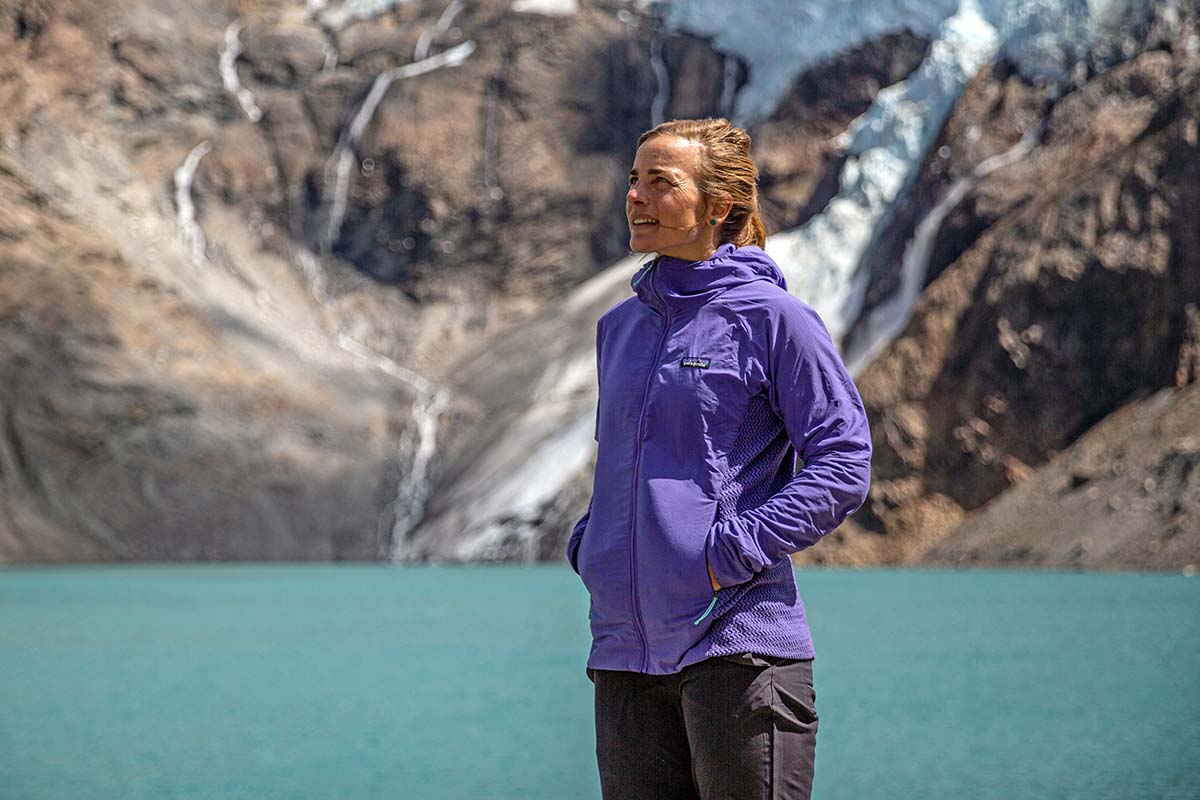
If you’re like most folks, you spend a lot of time picking out the perfect shell, then move to your insulating options, and finally just grab a baselayer willy-nilly. Trust us, this is a poor methodology. As the layer that’s next-to-skin, a baselayer is at the core of moisture wicking, temperature regulation, and a number of other essentials. If you have a crummy baselayer, all the fancy tech in your mid and outer layers will be nearly worthless. Top materials include merino wool for its excellent temperature regulation and odor prevention, and synthetics are quite good at drawing moisture away from your skin. Check out our top baselayer picks to see which ones stand out as best.
Back to Our Top Midlayer Picks Back to Our Midlayer Comparison Table